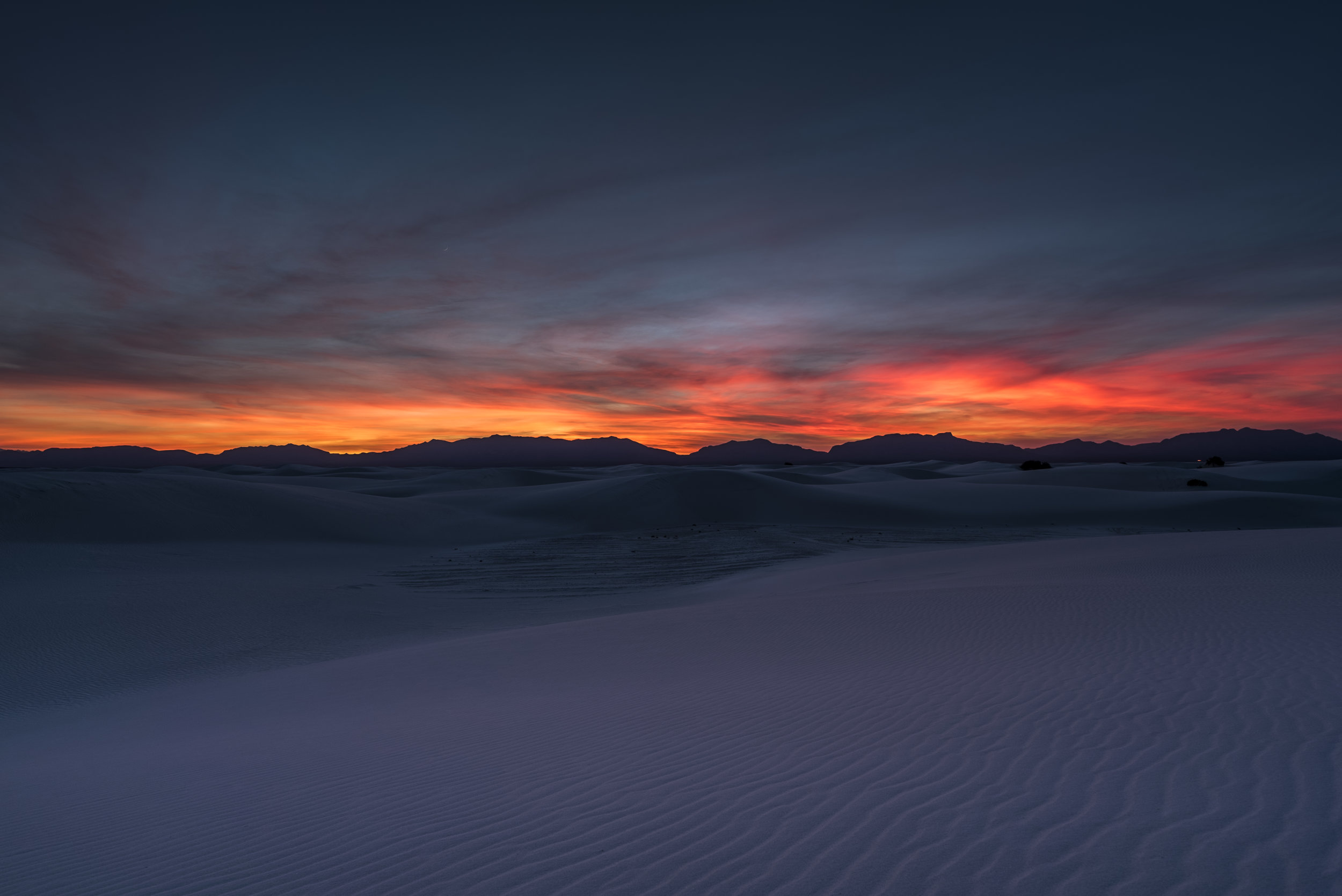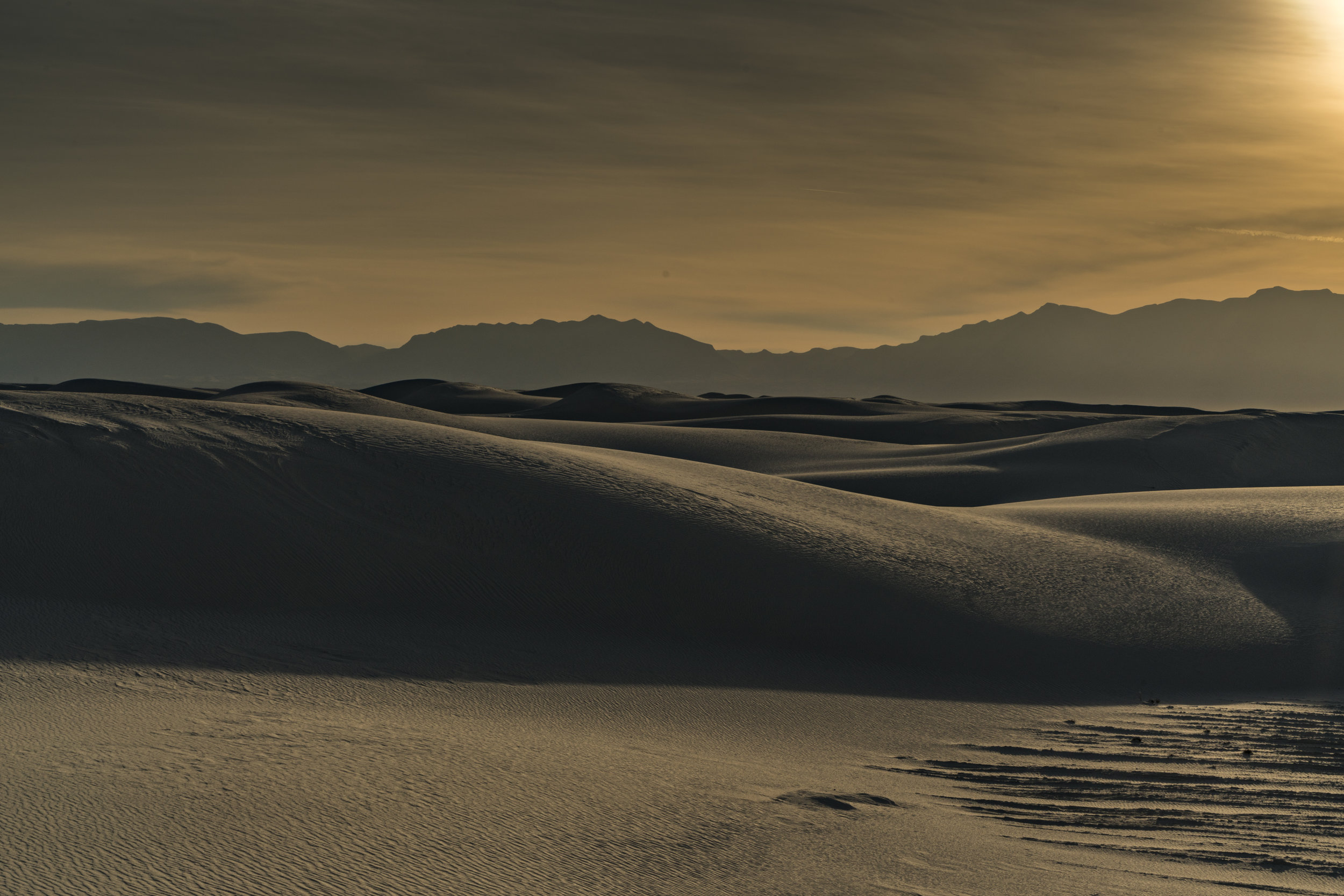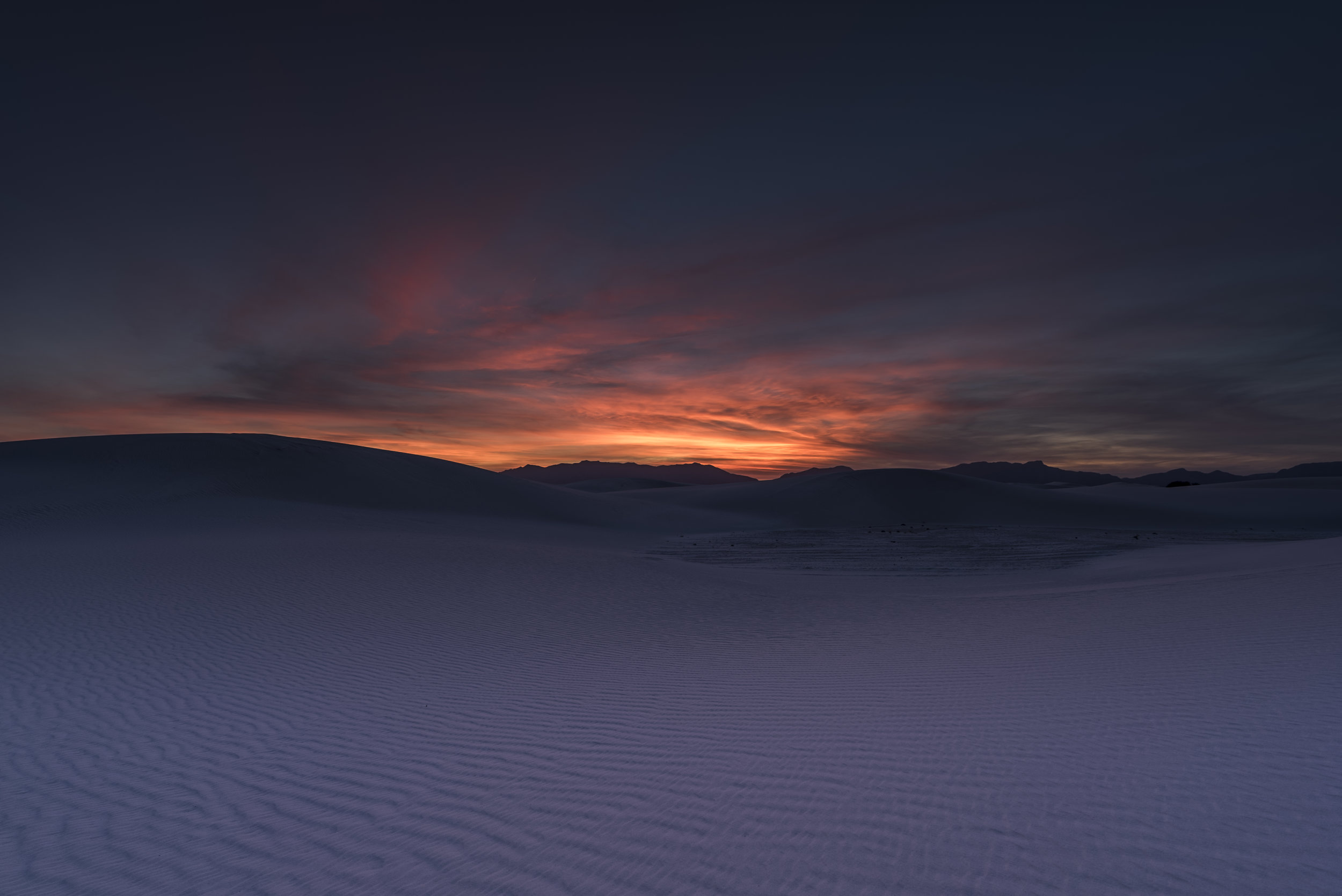National Parks
Long my favorite sites, the vastness of Grand Canyon, the power of Yellowstone, or the cathedrals of Yosemite, they all inspire, and deserve to be protected for all future generations. I’m not sure I will ever be one of the travels the sees every one of our National Parks, but I know each time that I do visit, it will enriched my life and my portfolio.
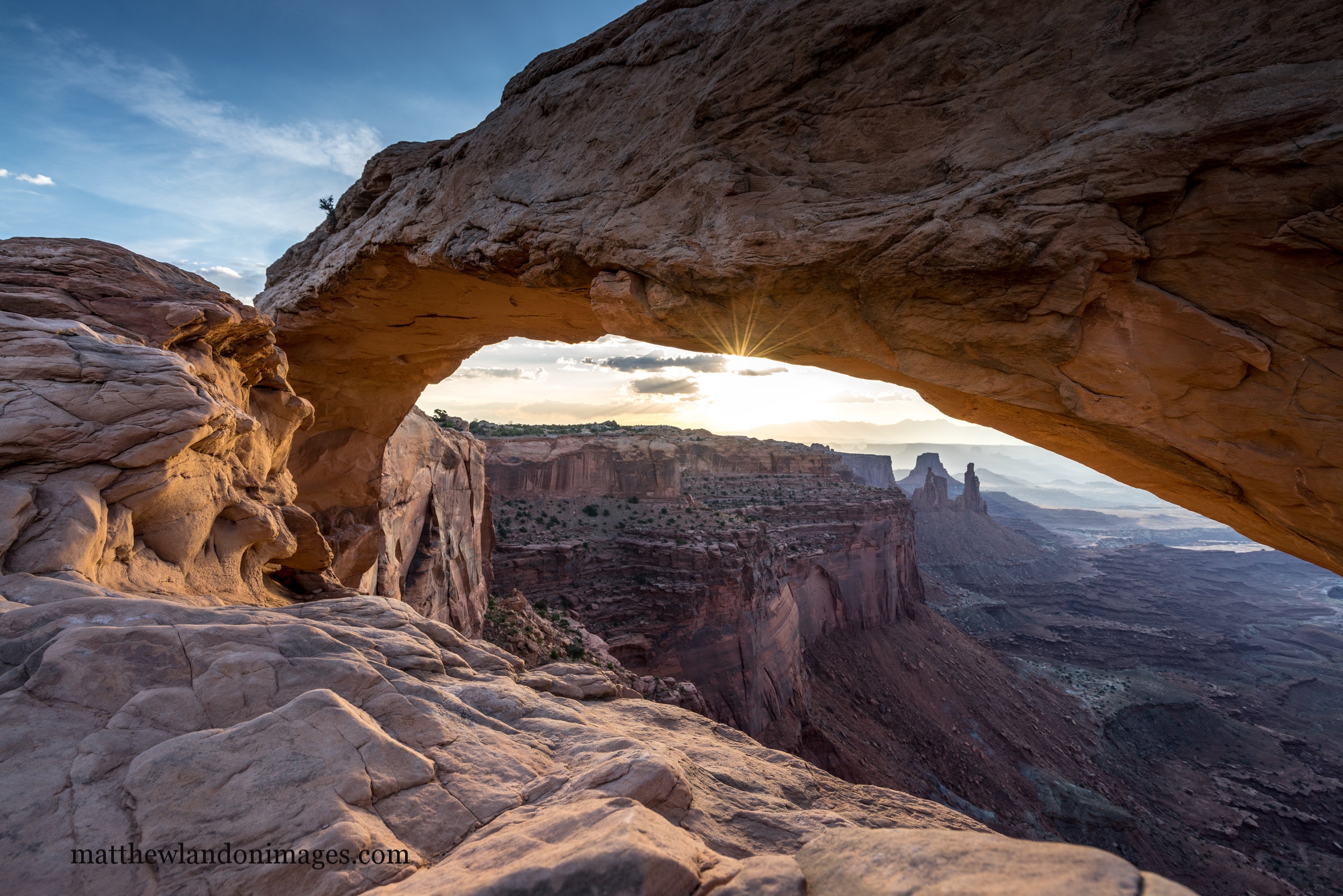
Long my favorite sites, the vastness of Grand Canyon, the power of Yellowstone, or the cathedrals of Yosemite, they all inspire, and deserve to be protected for all future generations. I’m not sure I will ever be one of the travels the sees every one of our National Parks, but I know each time that I do visit, it will enriched my life and my portfolio.
A West Coast trip in 2017 started in Moab, accidentally. It wasn't my initial intention, but I'm happy with how it unfolded. Moab is special in it's own right, and deserves to be visited and explored. I missed many sites this particular trip, but this sunrise was special, and one I've been wanting to capture for awhile. The story of that adventure is highlighted here, in a five-part blog.

I sat on a rock at Yavapai Point watching the sun change from glaring, to illuminating, to vibrant and frantic, then finally softening. There were four distinct and unique sunsets that night, it was a joy to see all of it transpire. The "blue" was the beginning of the night...
There's something in the blue. One of my brother's final plays was "The Drowsy Chaperone." It is a comedy that follows the narrator through as series of quirky events in his New York apartment building and how he relates his life to various Broadway shows. In the narrator's opening monologues he discusses "blue." It's his phrase for the low-level anxiety that creeps into all of us, that little discomfort that creeps in; he would cure this "blue" with music, with musicals, specifically. It is an entertaining play if you ever get to see it, and I felt comforted know that this is where my brother would turn when he felt "blue." He would turn to his art, his creativity, he wouldn't wallow in it.
Two of my favorite images so far this year are blue. This sunset, and a sunset on New Years Day over Lake Vallecito in Southern Colorado. Both of them are warm to me. As heavy as they appear both are very light in my mind, both bring me such calm.
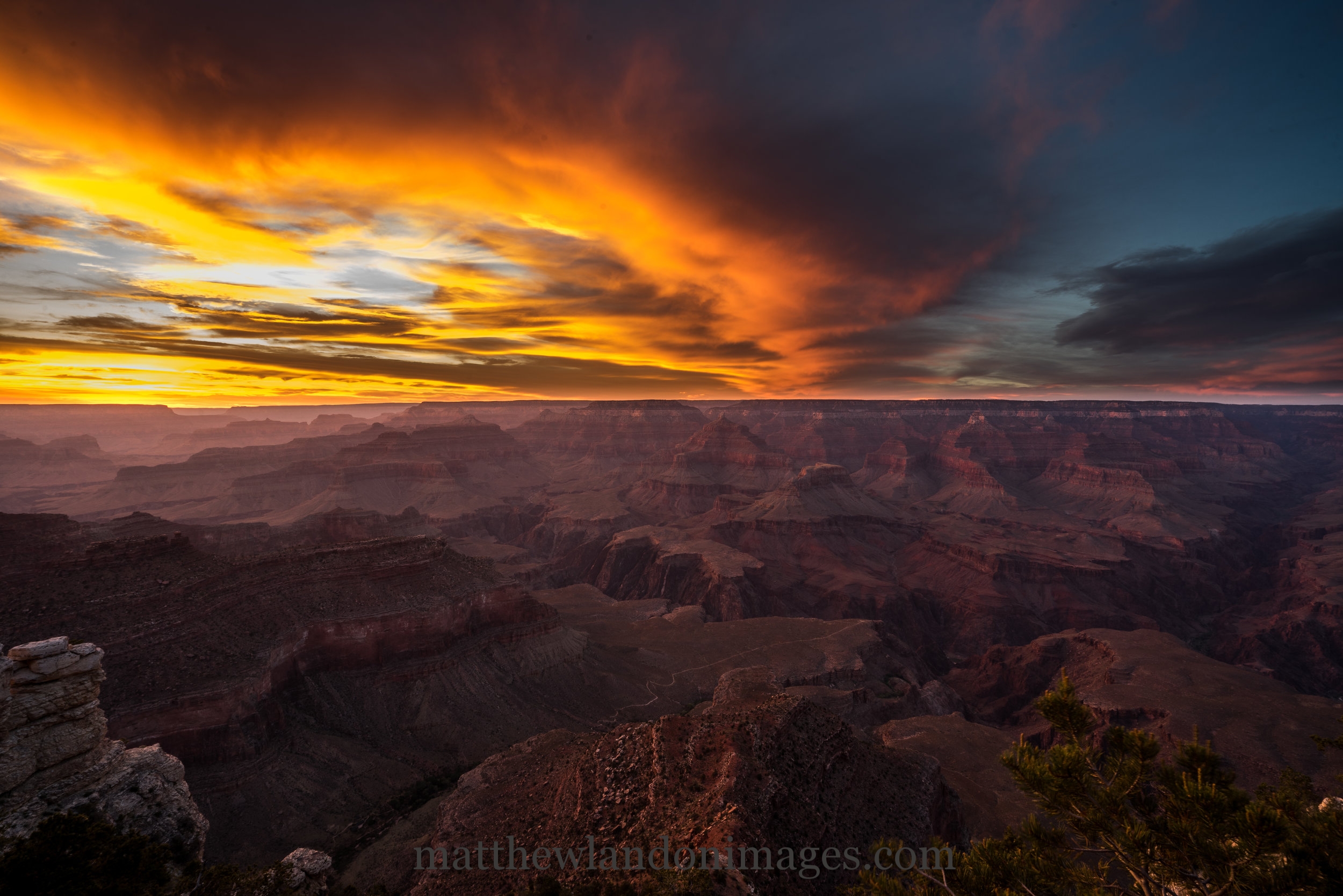
This was the third phase of the sunset, on June 8th, 2017 at Yavapai Point, along the south rim of the Grand Canyon.
The Grand Canyon is truly that, “grand!” It is a place that deserves our time, and attention. It is a place that deserves to be part of anyone's “grand adventure.” When I was sitting here creating watching the sky transform, I can recall thinking about Andrew and Tanner and the “grand adventure” that they had taken to Southern California.
They were about a day ahead of me, and I was coming to realize that our paths were not going to cross. But earlier that day I had been thinking about what if the conditions were different. What if their mother or I had been African-American? What if that one facet of their lives were different? Would they have the luxury of being able to load into a 1970 Volkswagen bus to drive across the country? What challenges would they have faced? As a parent I had my own fears about their journey and their circumstance, but with the racial tensions increasing again, I can’t image to compounding of these fears simply because of a child’s skin color. I know this was weighing on my as I sat here, I know I was thinking about my brother Steve, and I know I was thinking about Angela, the person who was supposed to be on this journey with me.
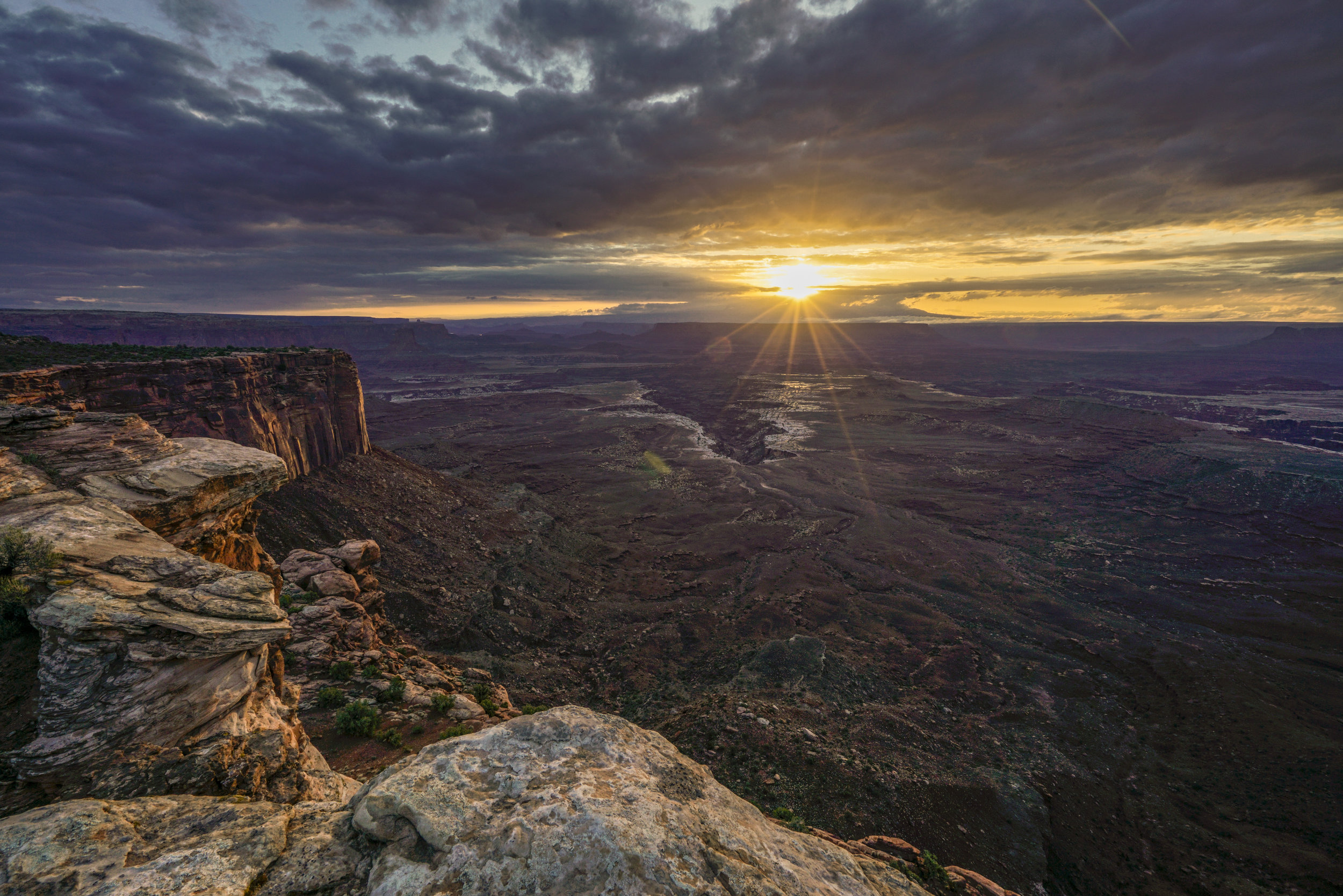
Island in the Sky, Canyonlands National Park
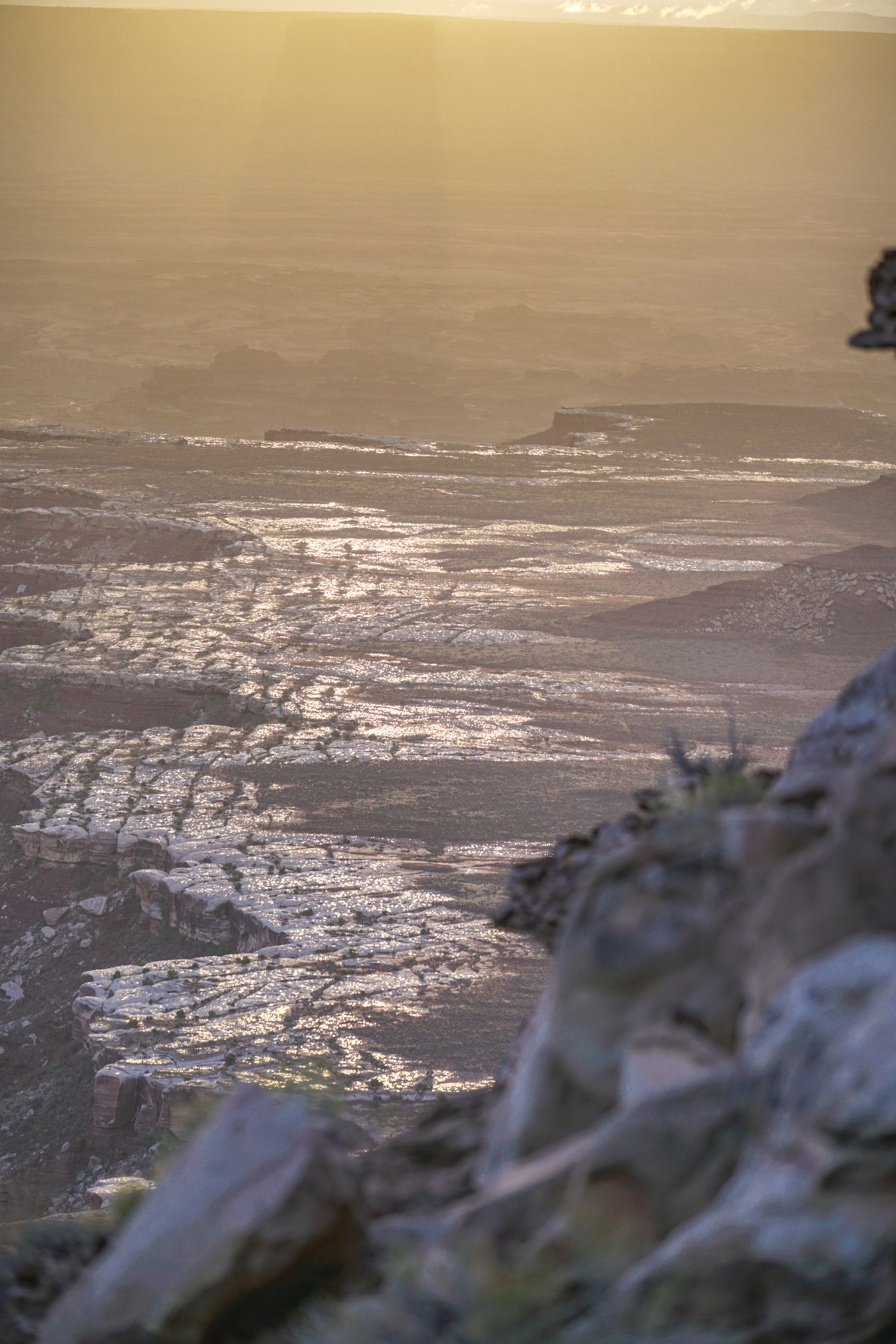
The overnight rains created shimmering pockets in the shallow depressions. This played havoc with the camera sensor at times, but created compelling images none-the-less.
Buck Canyon - Detail 1

Companion to the mornings sunrise.


Rain overnight made for a glow that was unusual, and it created deeper, muddier tones in the landscape than I/d imagined.
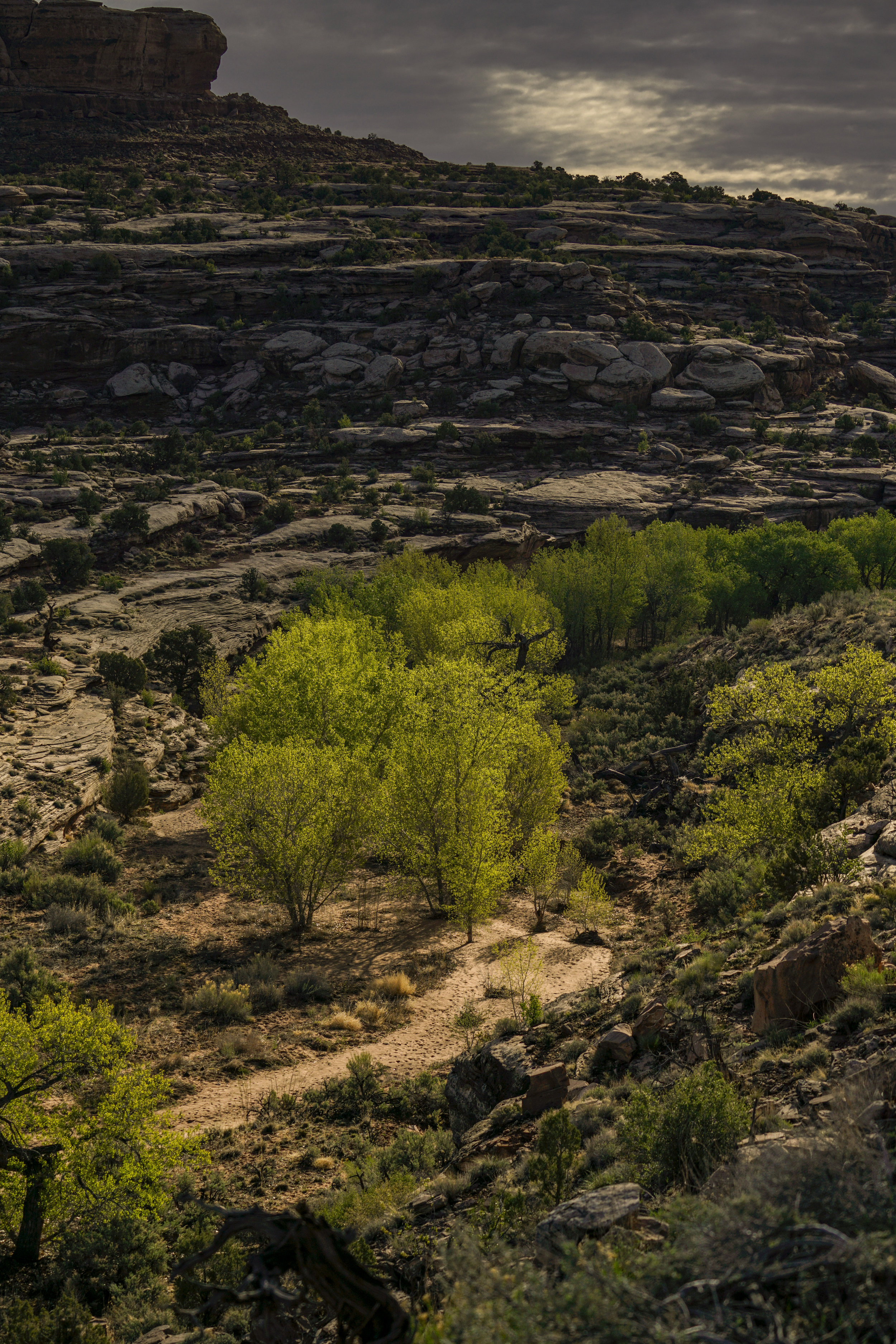
I've become reacquainted with Moab in recent years, after not visiting it since my 20s. It is a spiritual place, its a rugged place, it's barren, so full of life. "Desert Solitaire" opened my eyes to the Southwest. Abbey's words are so rich, is tone so stark, he perfectly described this land, and laid out the treatise as to why stewardship and not exploitation are needed here.
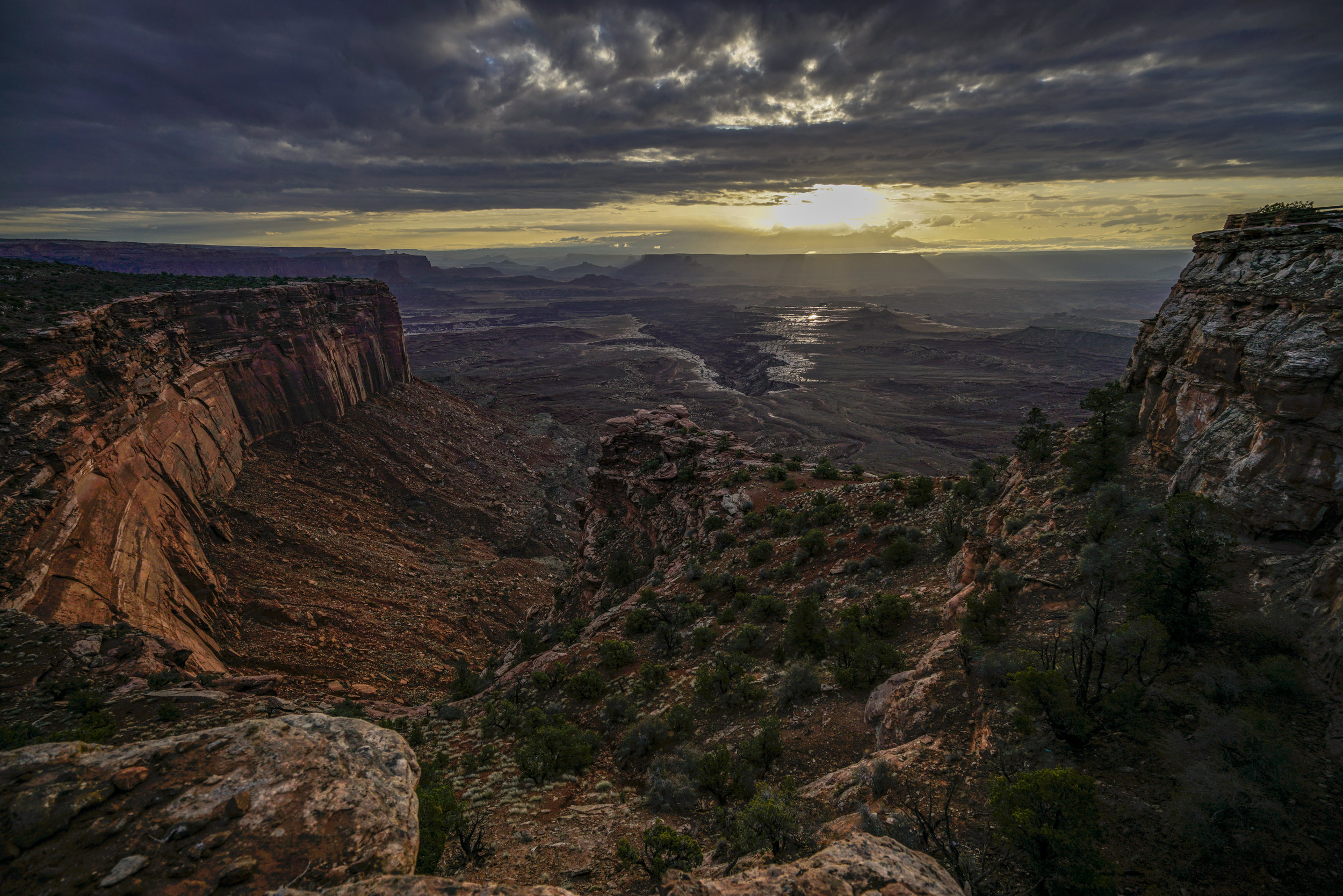
I almost walked away from this composition. After 90 minutes of watching the clouds hide and reveal the sun, I was cold, and exhausted from missing most of the night’s sleep. But, crouching on the edge, find as much symmetry as I could, this became a favorite instantly.
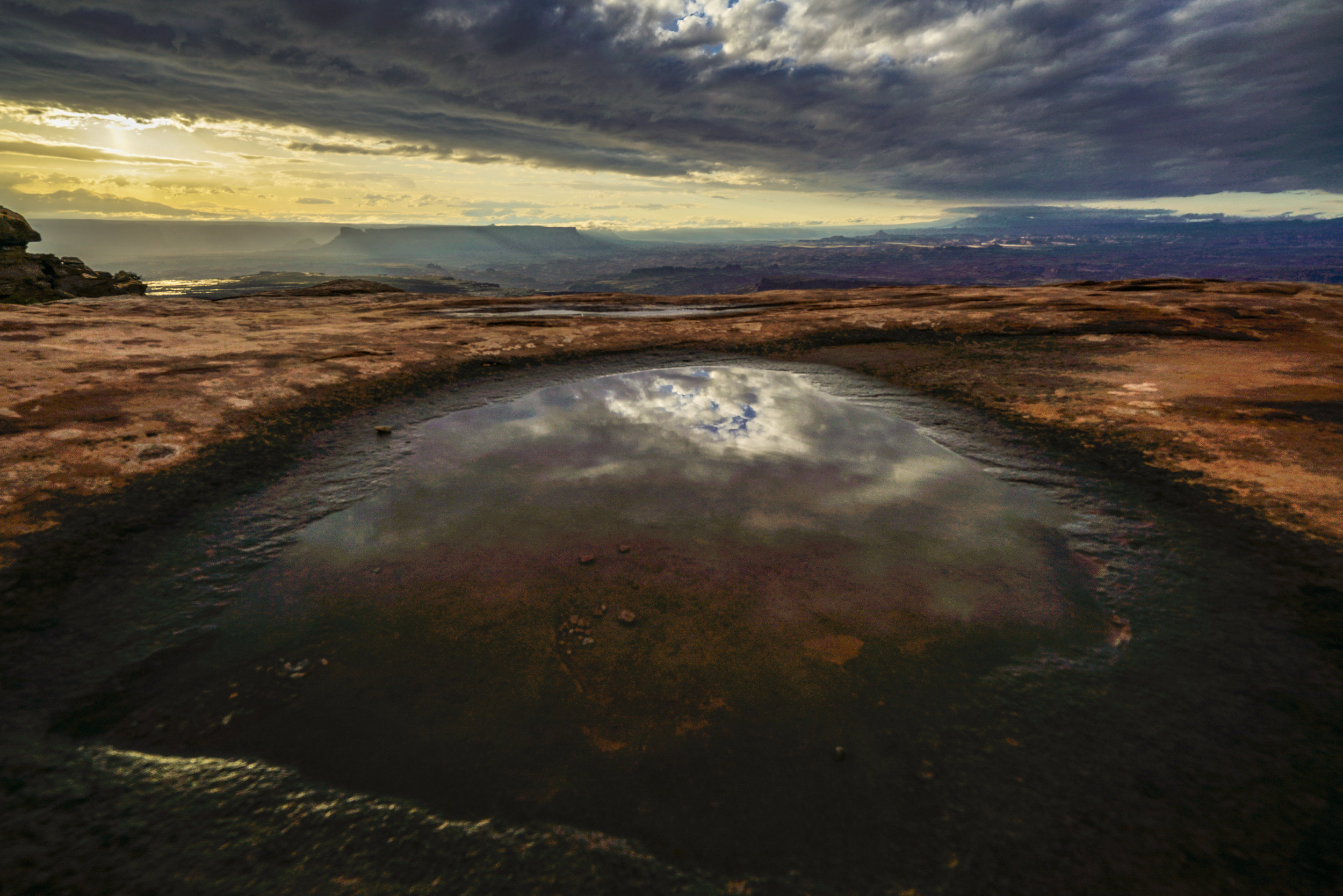
A passing fury,
Washing shallow impression,
Quenches a last thirst
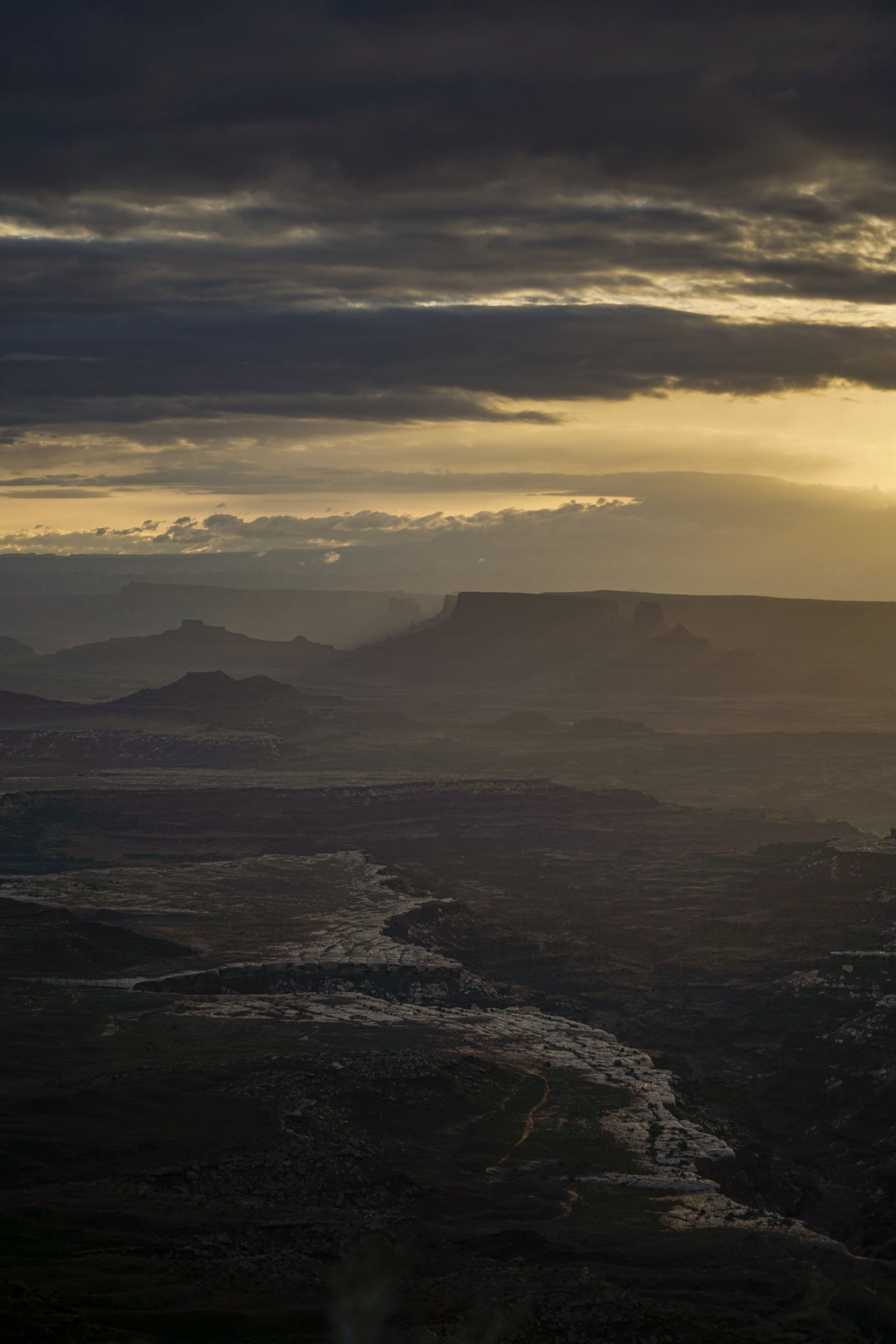
The overnight rains created shimmering pockets in the shallow depressions. This played havoc with the camera sensor at times, but created compelling images none-the-less.
Buck Canyon - Detail 2

Morning plays that fickle game; will I illuminate or not? Clustered, colliding, colossus; these ramparts were forged in the greatest kiln of all, they’ve withstood battles far greater than we can ever throw at them.
I shoot this at F/4 because I needed as much light as possible, as I was shooting without my tripod. I’d carelessly placed the tripod next to my 4Runner when packing up from shooting the Milky Way, and simply backed into, breaking one of the legs off. This image isn’t as sharp at F/4 as it would be at F/13, but I couldn’t pass up on the glow lighting up the rock faces.
As for the tripod, I contacted the manufacture, 3 Legged Thing, and they were able to send me the piece I needed. This is the second time 3 Legged Thing has been able to help me out. I will be a lifelong customer of theirs.
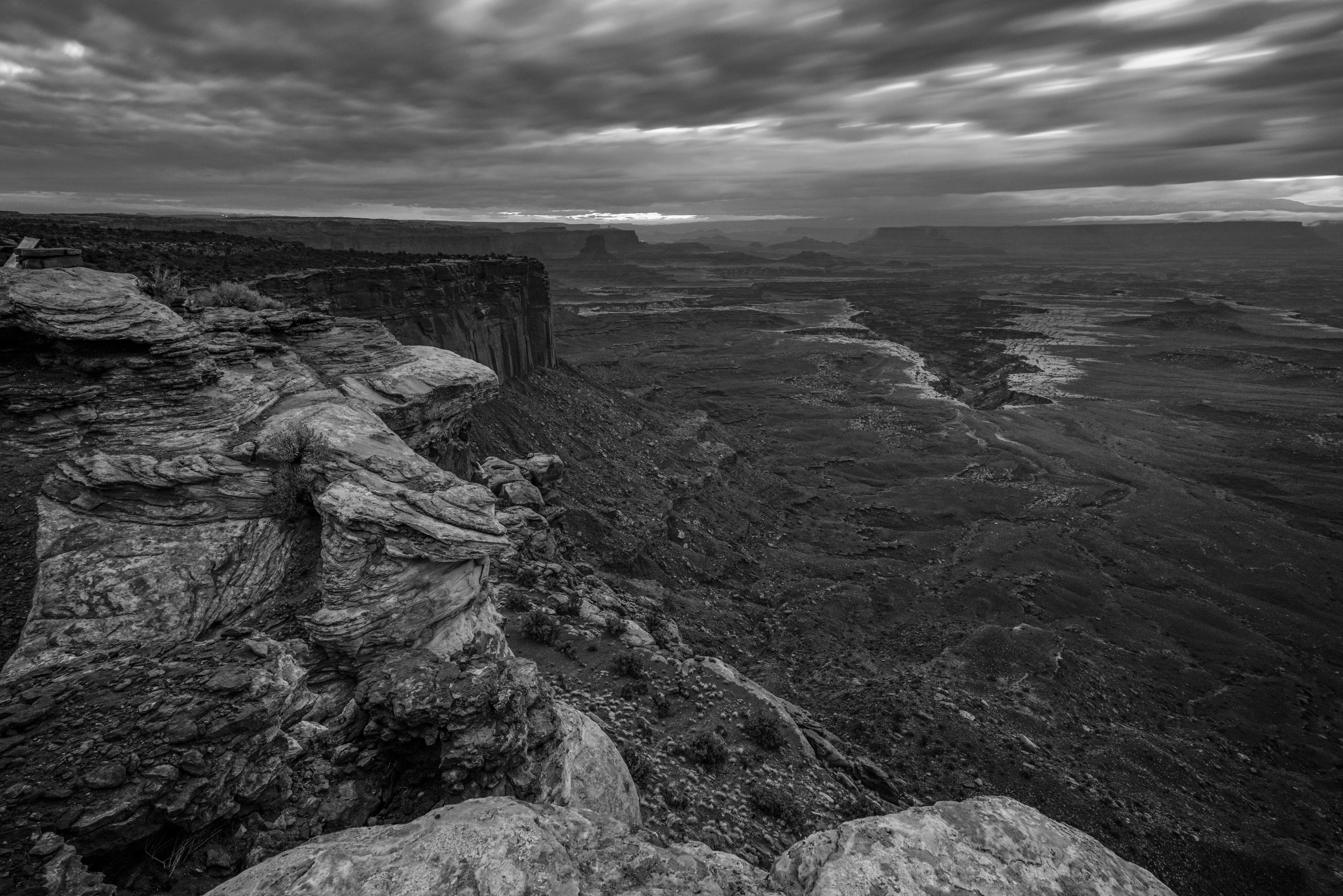
This has been the metaphor, the moving meditation. How do we keep moving when we’re broke, when we are stuck? How do we keep breathing even though the emotions and memories are stuck in our throats, choking us.
This is one quarter of a 4 image panorama that for some reason won’t load. I hope to produce this on as a large, metal print.
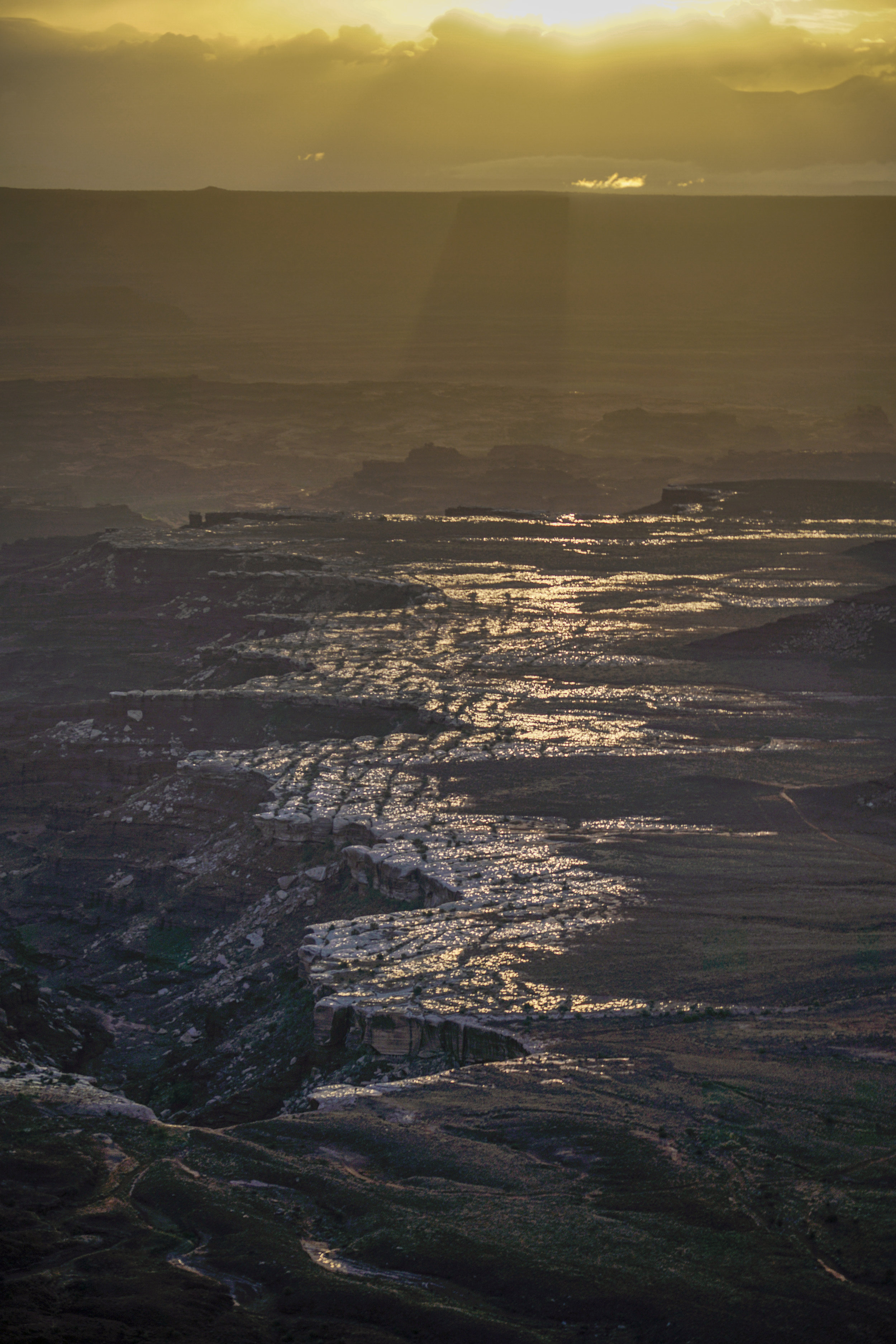
The overnight rains created shimmering pockets in the shallow depressions. This played havoc with the camera sensor at times, but created compelling images none-the-less.
Buck Canyon - Detail 3
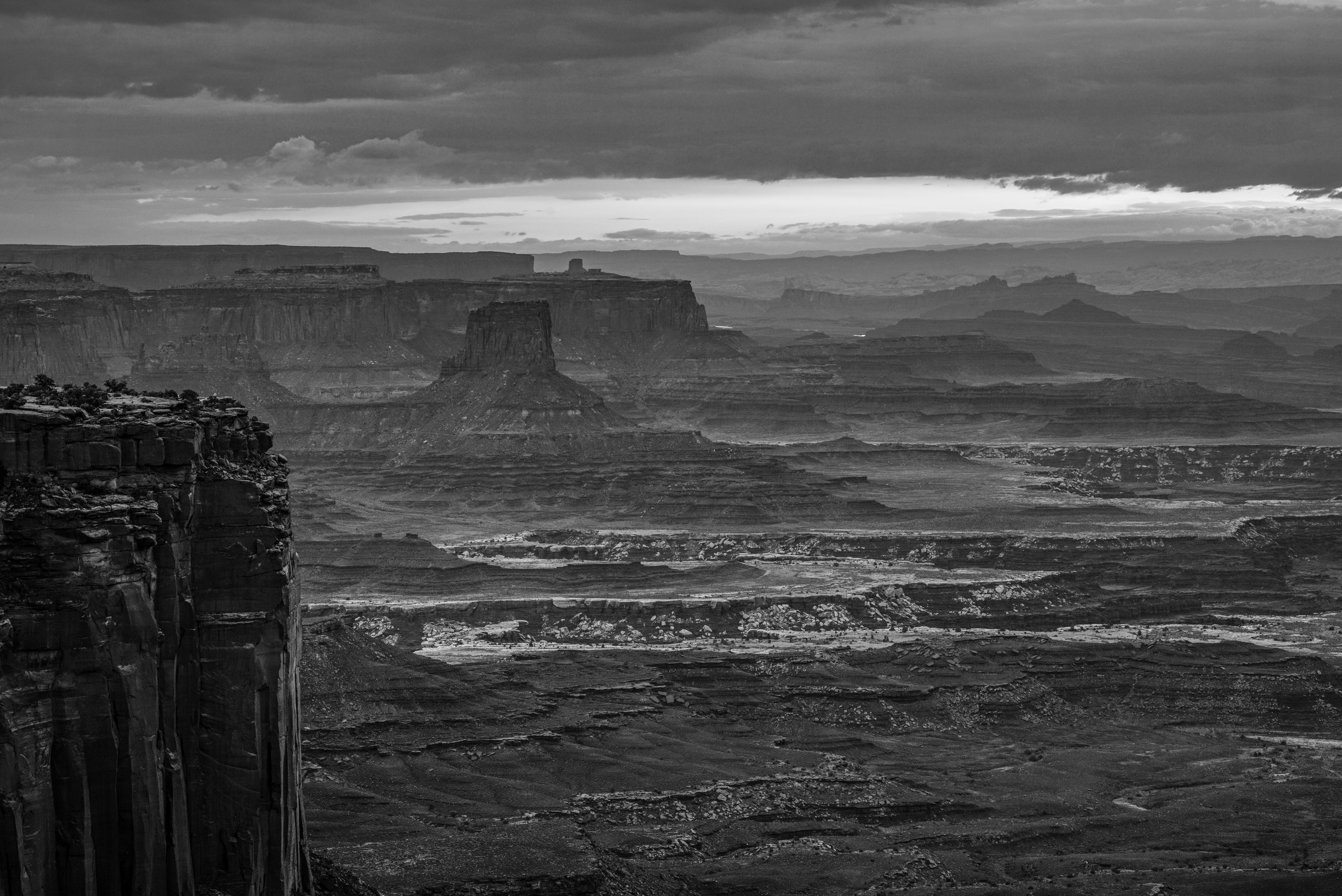
The sky was nasty, livid, it wasn’t happy this morning. Stifling the joy of the new day; it rolled away it’s misery, mean and discontent.
Not all mornings are this sullen, but some moments are.
Shot at 135mm with a Sony FE 70200F4 lens.
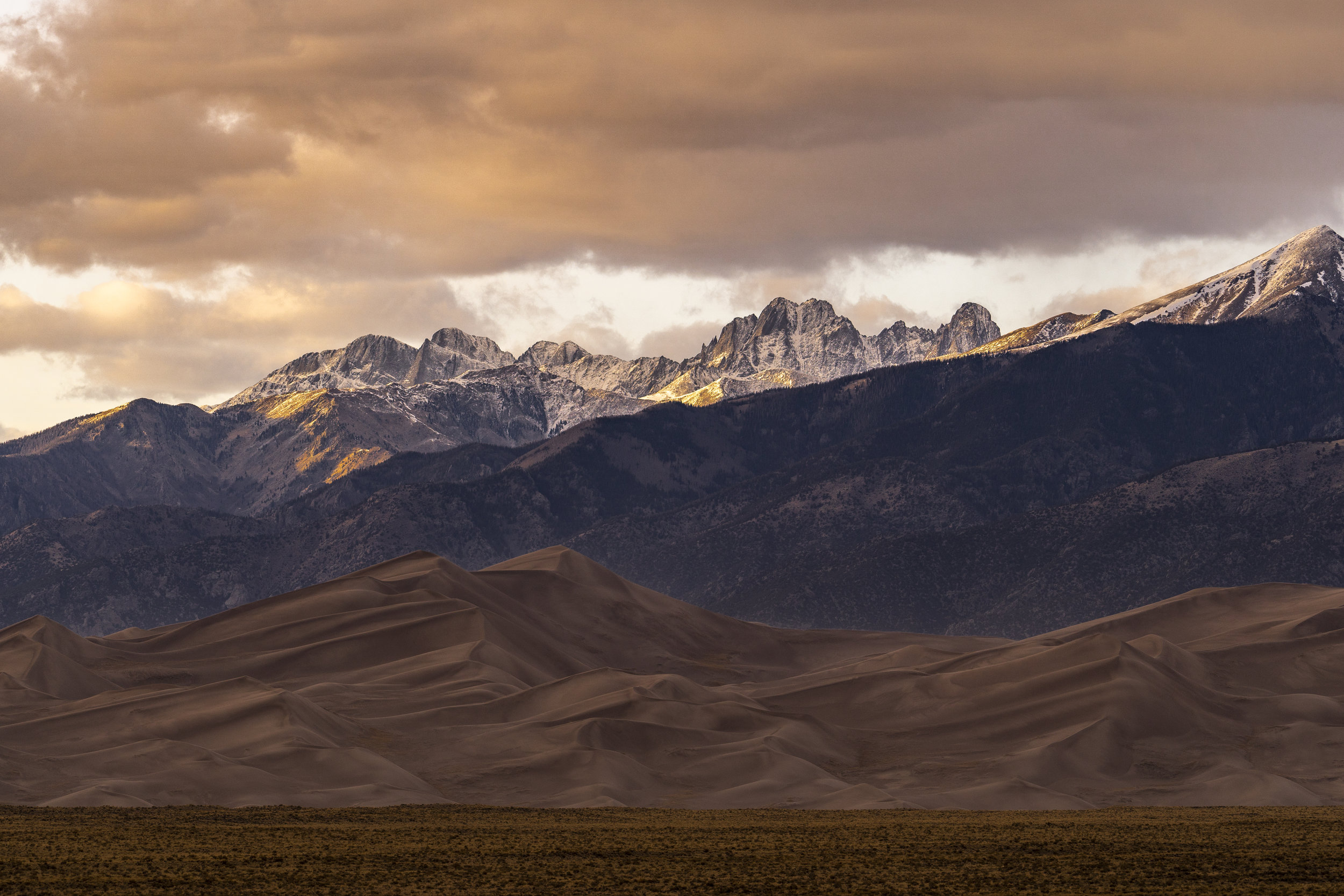
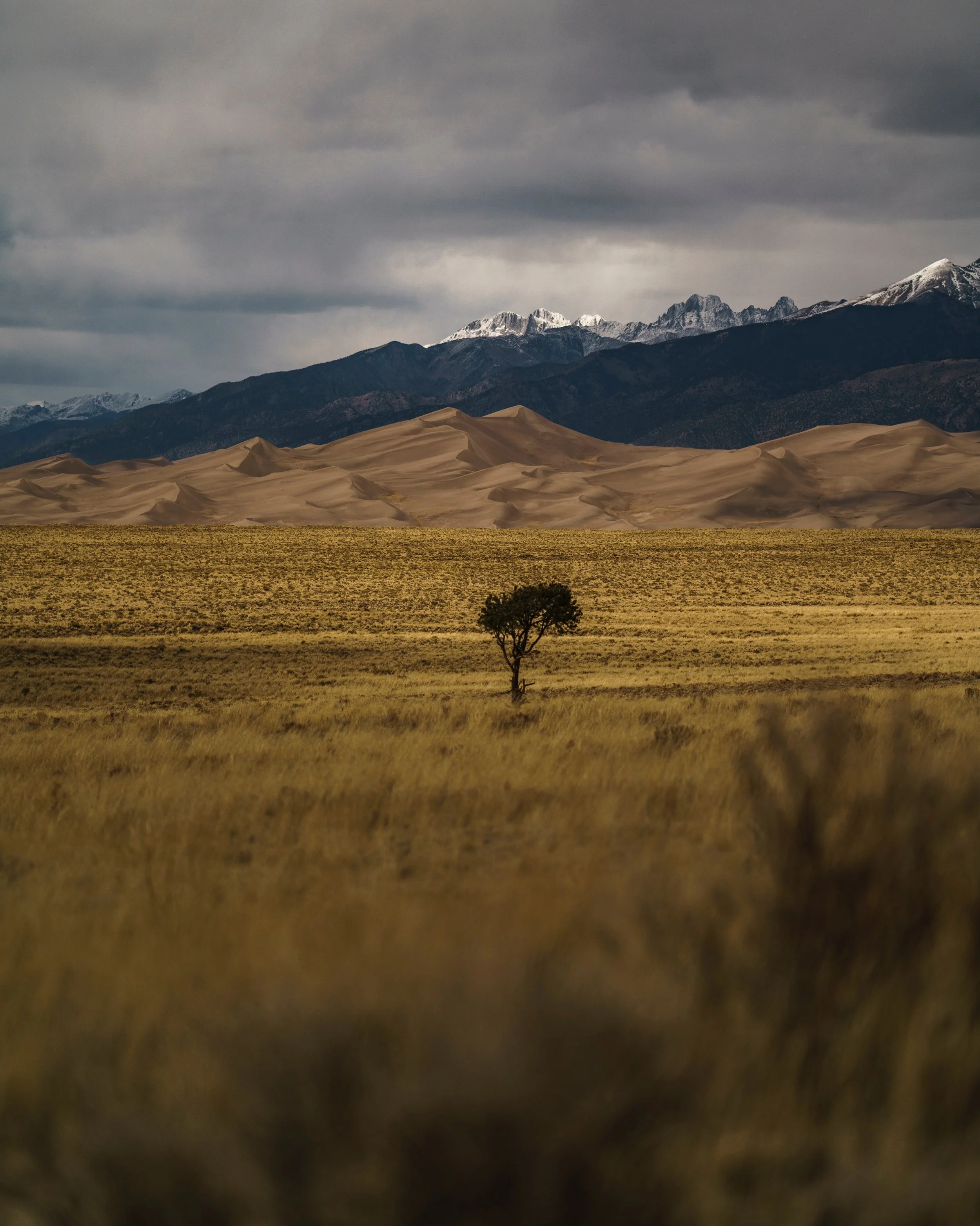
It is against my training to interject bias into a scene or situation, but it's not against my person to do so.
This lone piñon, on the southern end of the dune, could be in silent rebellion, our standing guards, we'll never really know.

The Sangre de Cristos, which form the eastern boundary of the Sand Dunes, contain nearly a dozen of their own 14'ers. Kit Carson and Challenger, along with Crestone and Crestone Needle create an impressive and imposing buttress for the dunes. Star Dune is the prominent feature on the western end of the Park. Nature seems to understand symmetry better that we do.
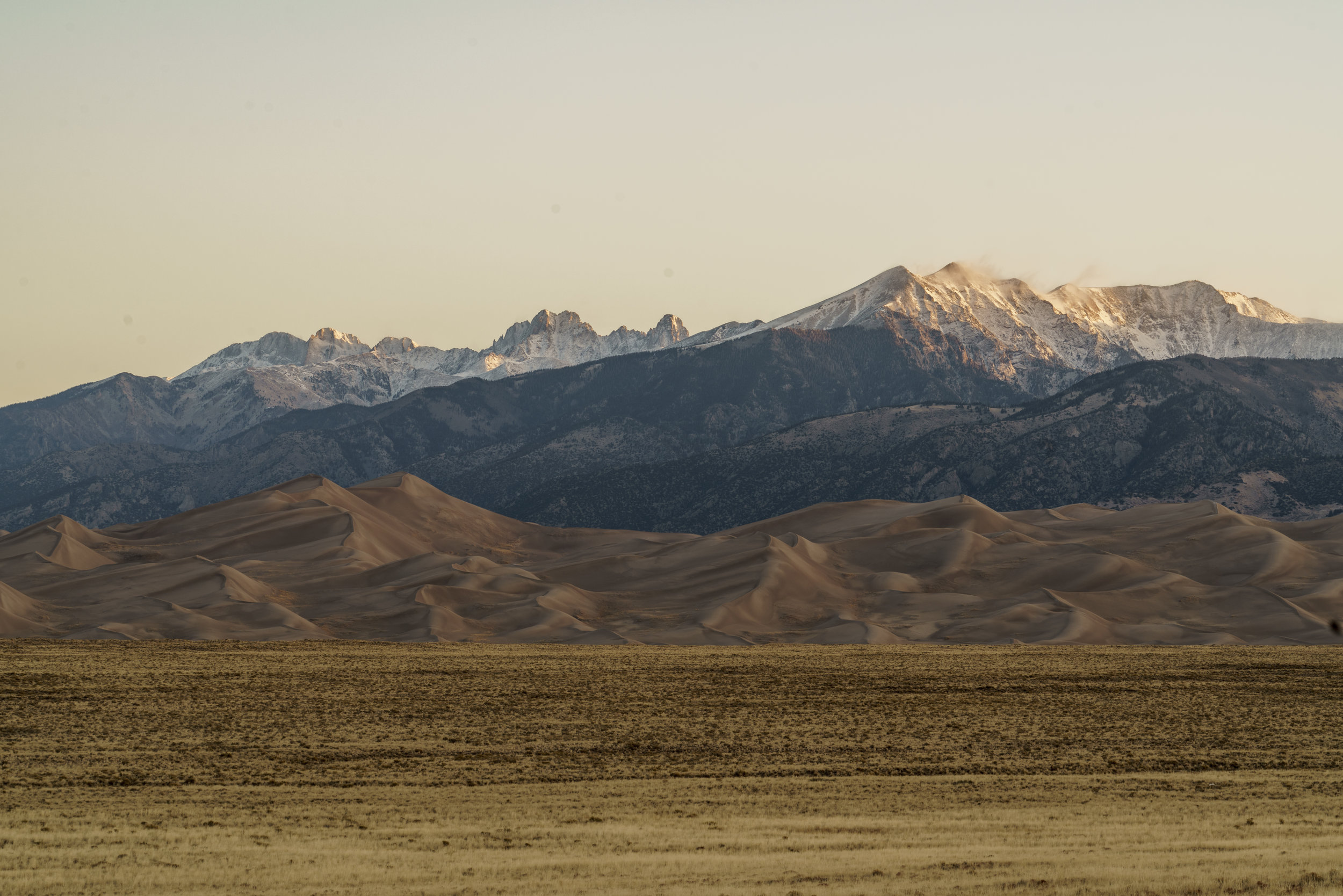
First light of the day rained down on the high peaks, slowly making it's way up and over the Wet Mountains to the east. Winter still has a strong grip in parts of the Rockies, though late it coming, it is appreciated.
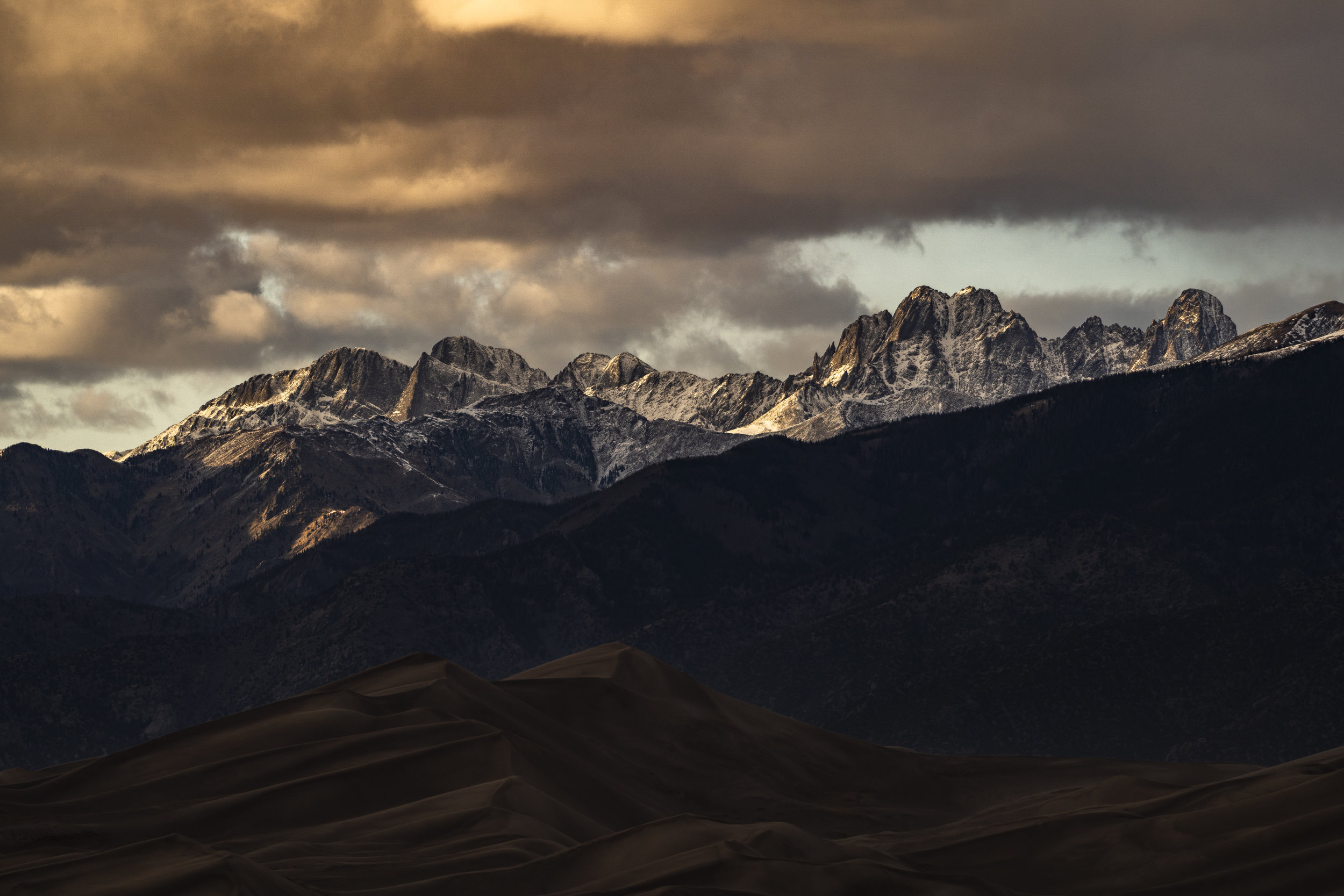
That it can be toxic, no matter how inviting it is. Some people and some circumstances will put you in real danger. You don’t realize that you are endangering yourself physically, or emotionally when you are experiencing this kind of love.
Love may be innocent but still painful when it breaks. No matter who naively you approach it, that naivete won’t protect you from the deep well of grief that follows. Simple glances across a room, a recognition of something profound; lost to misery when it unwinds.
It must be unconditional, you are never keeping score. There is no better “I” thank “we.” You can’t move your goal posts, because everyone will ultimately lose.
Love comes in many forms, and it will trick you when you least expect it. It’s shape will disarm you, and break every rule you’ve ever known. The mess it makes, will take years to untangle.
It has to be beautiful. It has to encourage and enhance every single experience. If you are not drawn to it, if it does not compel you to be better, then you must leave it behind.
Love should always, always feel like waking home. That place, that’s always “just right,” that is where we want be. It is an embrace that holds and rocks you sweetly, and reminds you that you are never alone.
You can not take it for granted. Regardless of the circumstance. Even when it miscommunicates, it should still be trying to find the answer, together.
Finally, what all of these have taught me, is that if you are not ready none of this matters. You have to give up all expectations of it, you have to have a supreme faith in yourself, and your past must be in your past. This is what it means to “be ready” for it.
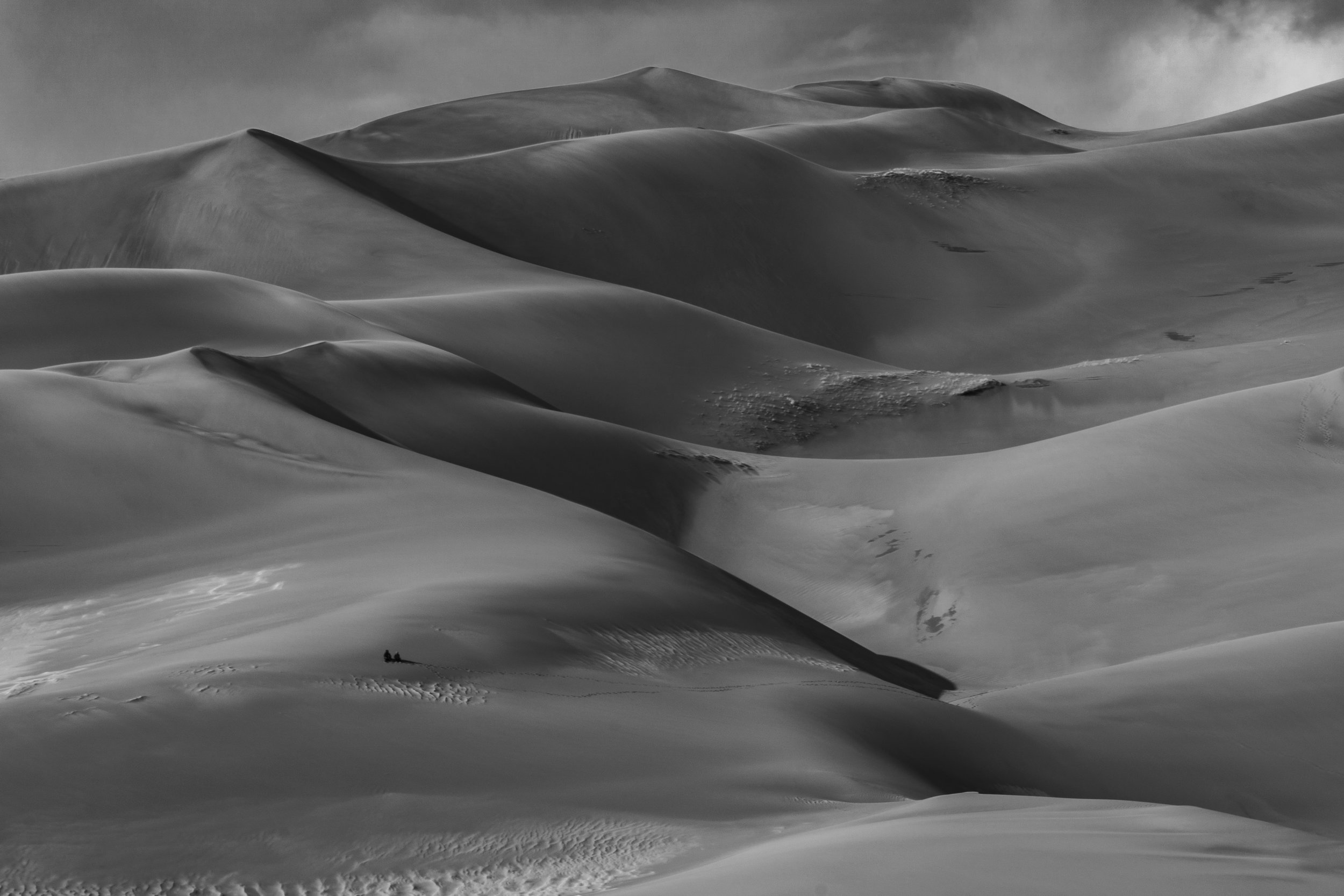
The massive deposit of sand on the eastern side of the San Luis Valley in southern Colorado has taken 1,000s of years to form. The site was declared a National Monument in 1932, and in 2004 Congress added it to the National Park Registry.
The sand dunes were the first Nation Park site in Colorado that I would visit when I moved here in 1988. And even though I have returned, that was 17 years ago with Andrew and Tanner, and our Big Red truck.
The dunes have not changed, they still inspire awe. I will return in a few weeks, to gather more colorful images, but until then we can only guess what secrets these two might be sharing.
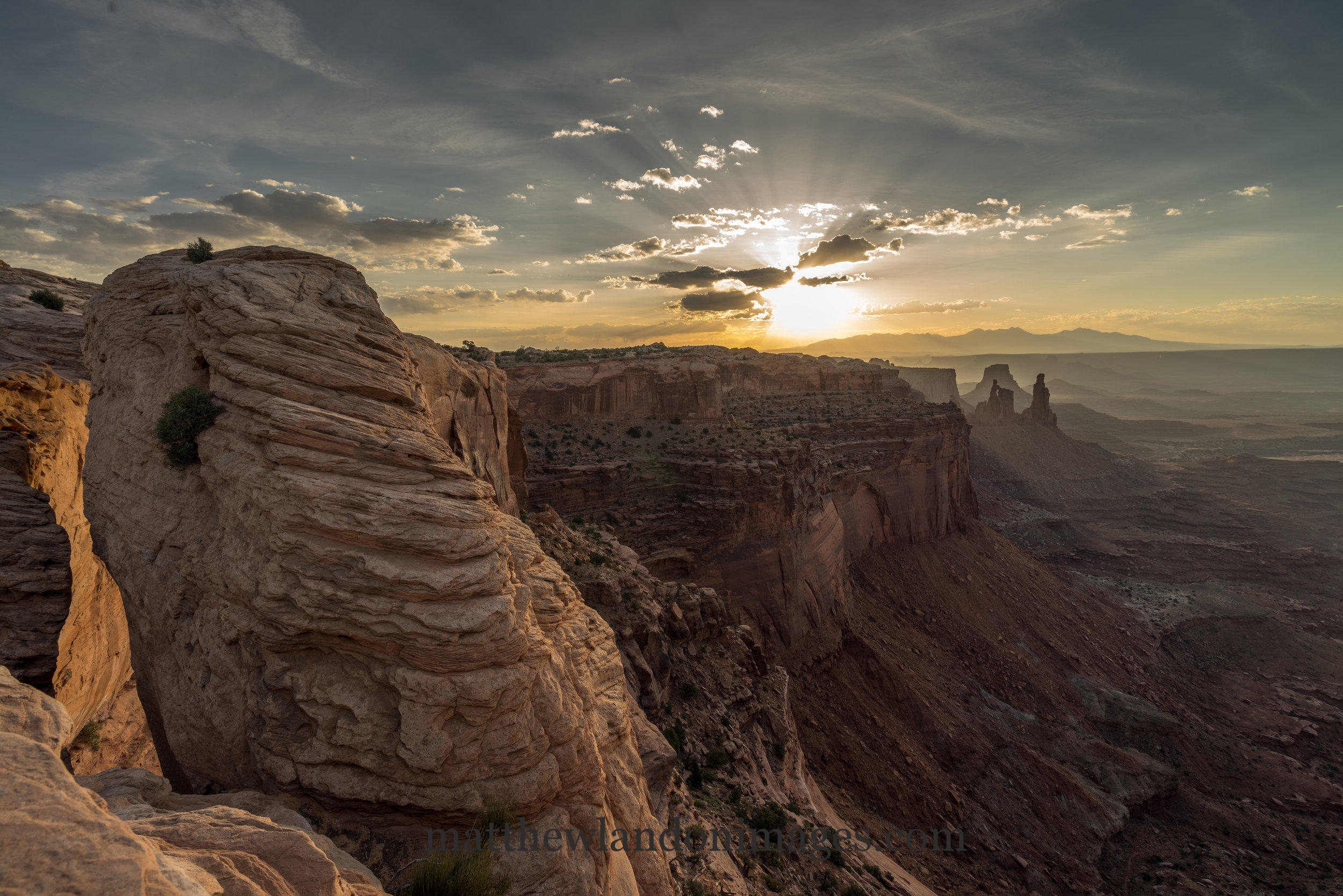
A different perspective...
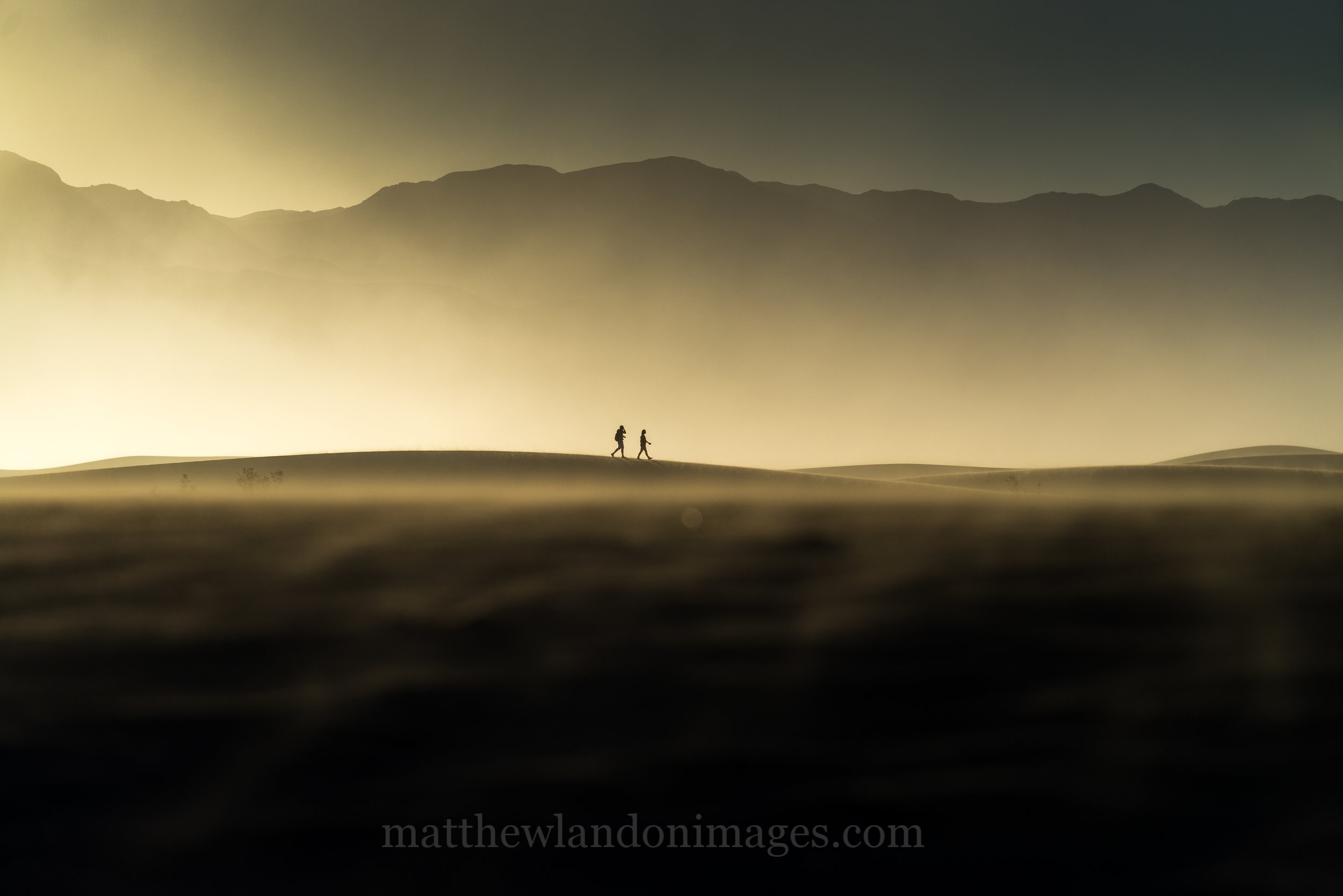
I’d left the Grand Canyon just as the sun was rising, and had arrived in Death Valley around 4. The heat was on that day, 109° in most places, making excursions of any sort unbearable. I resigned myself to staying in the air conditioning of my car and the visitors center, and only ventured out as the sun was looking to set, and that happened to be near the time I arrive at Mesquite Flats.
On the drive south away from Grand Canyon the road climbs on a long, gentle slope, until you are nestled in tall pines as you head into the heart of the Coconino National Forest to the west of Flagstaff. It’s a beautiful setting in and of itself, and certainly enjoyable to travel through. But during west on I-40 the plateau only last for so long and soon you are descending again and find the temperatures climb and climb and climb. It was in this growing hear and haze that I started to lose the peace I’d enjoyed on the rim of the Grand Canyon, and the illusions I was holding onto began to crumble, the discomfort in my current reality started to gnaw its way back to the surface.
Why do they collide; our realities and our illusions should be more compliant but they aren’t. There’s a natural tension between the two. As the mirage-like silhouettes appeared, photogrpahing, playing and dancing with eaca other long the dune’s edge, they would have had no idea another lens was trained on them. It was hard not to project my own illusions into their play, a reminder of what could have been. This was the tension that I had been struggling with on this trip. Having had a horrible break up, I was left clinging to the potential. I think this is one of my faults, as this very specific act haunted me for years after my divorce. I had stubbornly and painful held on to the potential of my failed marriage, and it ripped me apart day after day for more years than I like to recall.
So, watching this pair, knowing that I was supposed to be travelling WITH someone on THIS trip, just tore open all of those old wounds. I was aware when I’d gotten on the road that something wasn’t right, but the excitement of finding perfect images at Mesa Arch, and the experience at the Grand Canyon had only comforted those concerns. It seemed that here, in the dry and barren sands, the discomfort was stirring again.
ISO 50 | F/4 | 1/8000 sec.
I did walk out into the dunes with my camera, and even though I really didn't capture the images I was hoping to, this one stands out. Many of you have commented and complimented on this image. I hope you enjoy the final edit as much as I do.
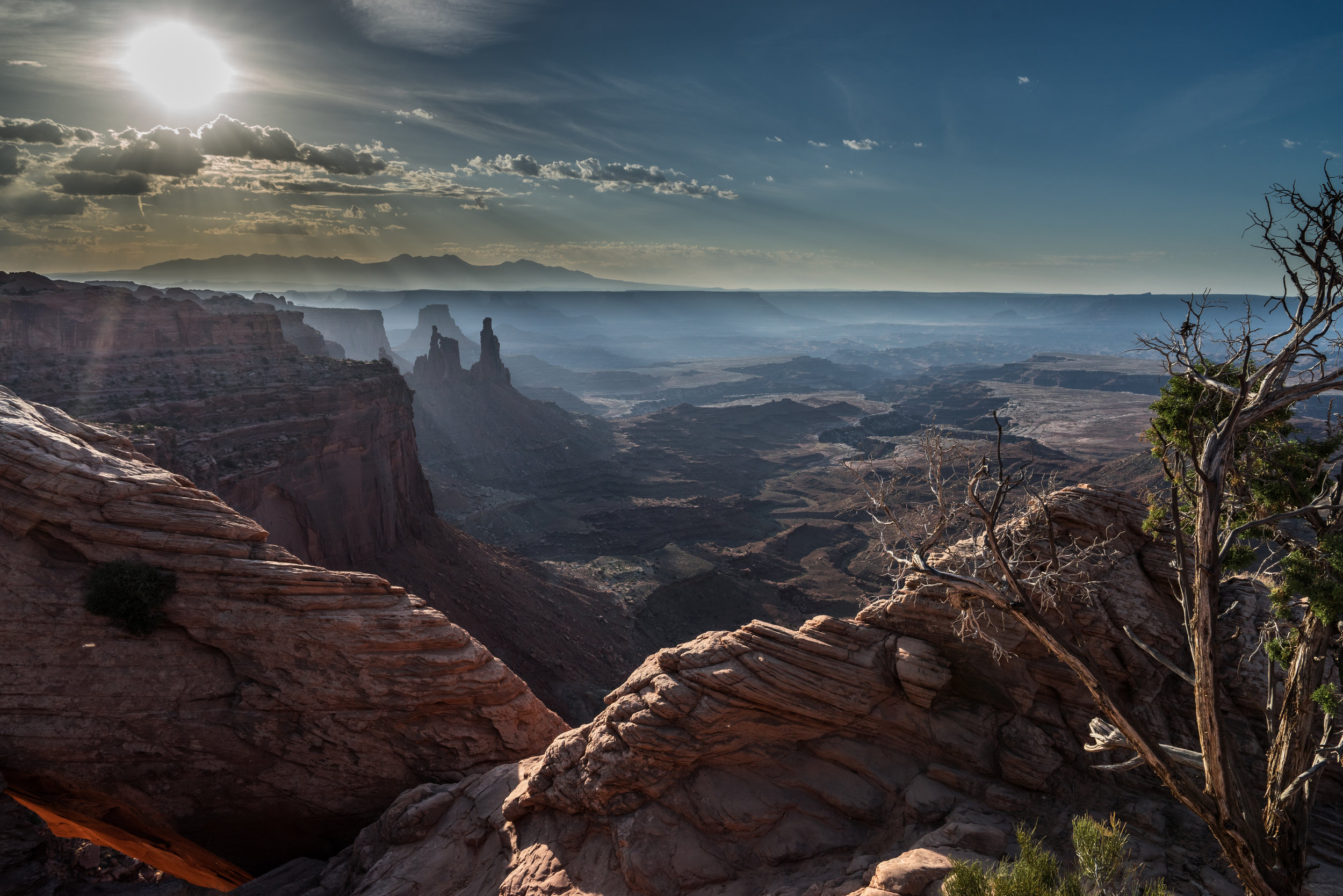
I've mentioned this before, and it's certainly true, sometimes a change of perspective can improve the overall results. I lingered around a lot of the sites I intended to photograph early in the trip. Mesa Arch was crowded this particular morning, and as soon as the sun had climbed up out of the arches frame the crowd quickly dispersed. I just couldn't bring myself to leave, and I'm not sure why. Maybe the longing for connection to the place, maybe an emptiness that wasn't fully realized? This sense stuck with me, and I'm really happy it did. It allowed me to sink in, and see further into the setting, to take in the different light.
This image is not just the Arch, but the expanse of Moab, of the Canyonlands, an to an extent, my trip. There is a space here, a space that is both empty and full. A space for both the obvious and the subtle. A space that is content and that needs to be awakened.
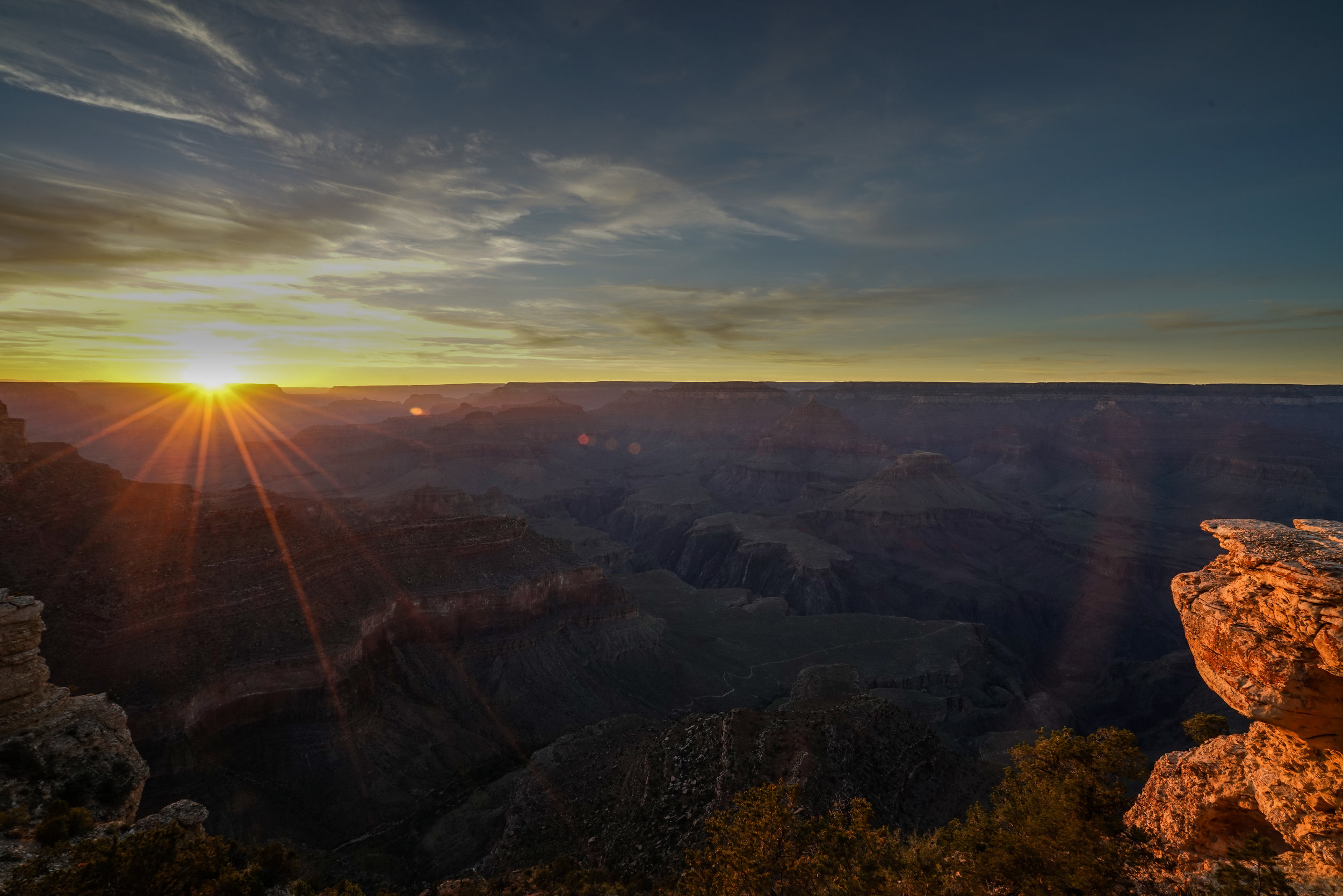
Playing with images and Lightroom, and making sure to share physical and digital copies with friends and family, sometimes things get overlooked. I've made it habit to put my pictures up in the bathrooms at my school. With all that has gone on the beginning of this year, I apparently overlooked a couple of stops and so have made the effort to make amends.
Susan liked this one the most this summer, so I've printed it and decided to add it to this post.
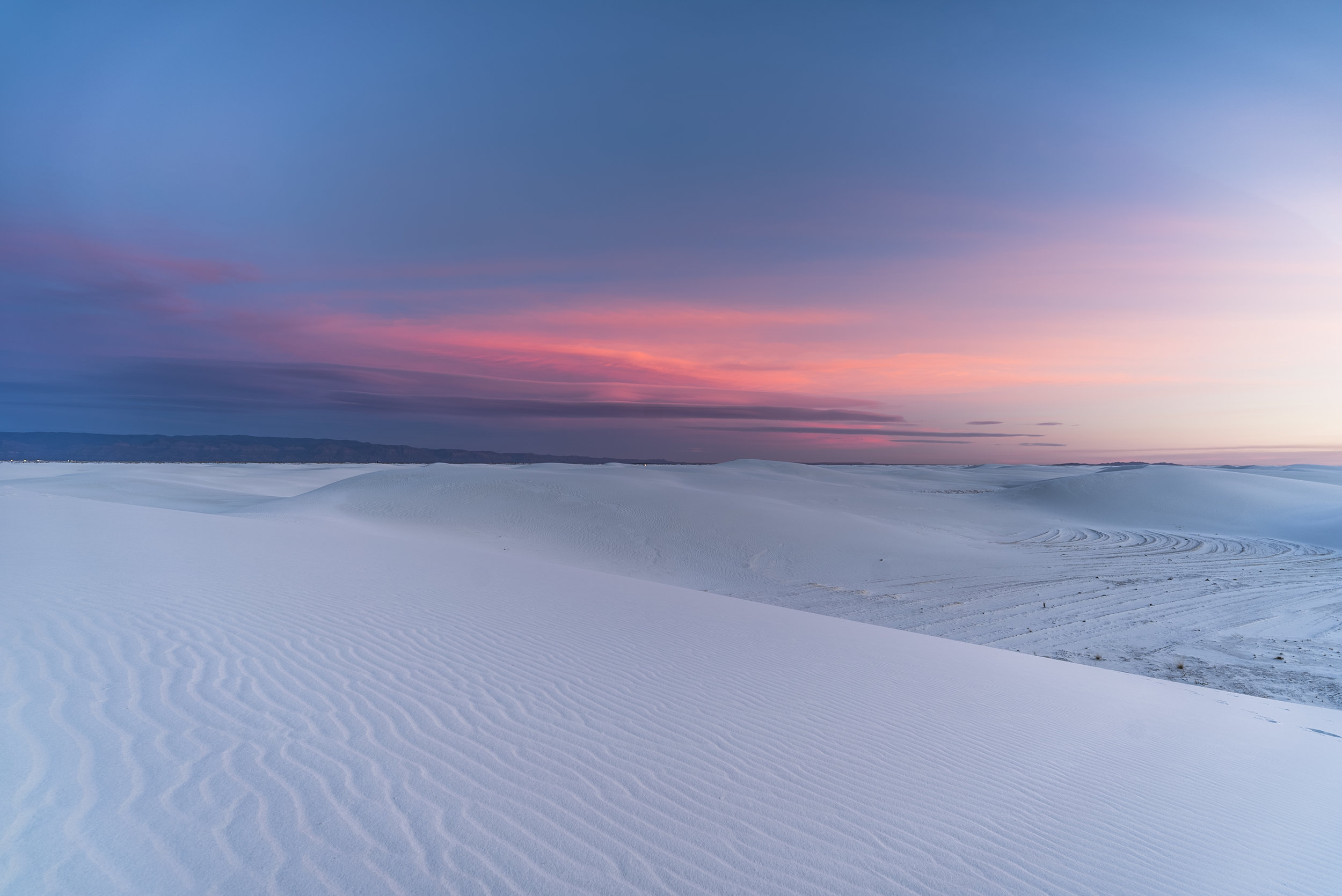
This sequence of images was at the end of my first “real” year with photography. I’d made the decision the previous year, just before my 50th birthday that it was “now or never.” I purchased a camera, took a class, fell madly in love, broke my heart completely wide open, then set off on a 3,600 mile long road trip to see if photography would actually work.
In my second public showing this image brought the “Best of Show'' award, in a room full of amazing and beautiful work. During the sunset that November night, I was focused on the San Andres Mountains to the west, the same mountains where Abbey’s grandfather, an old vaquero stood in defiance of the Federal government as they tested their long-range missile systems and forced other ranchers to abandon their homes and property. In the last few minutes I turned a camera to the east, to capture this glow over the sands, the valley that stretched out to Alamogordo and the Sacramento Mountains in the distance. This light was absolutely breathtaking, turning the gypsum sands into a winter-like scene.

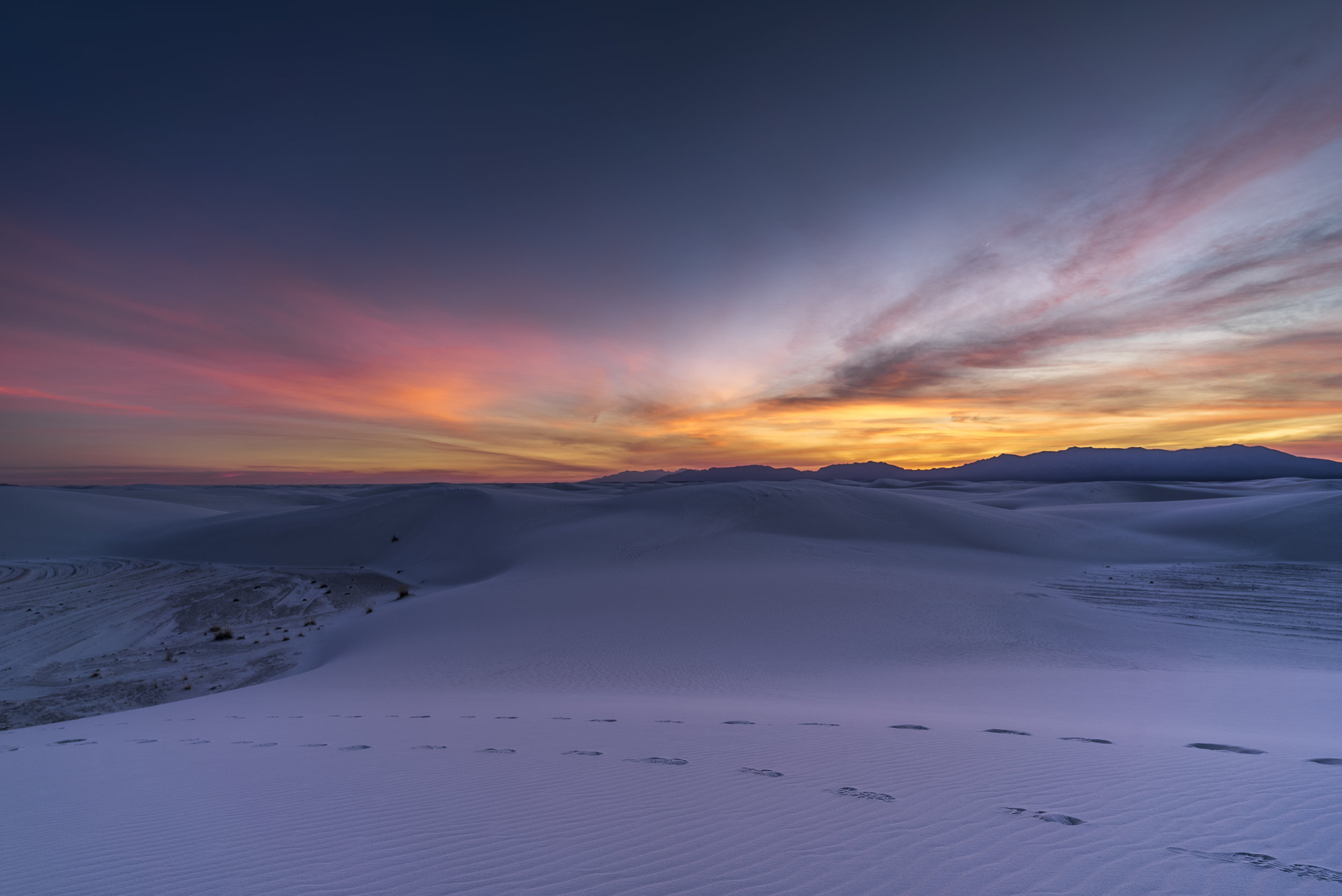


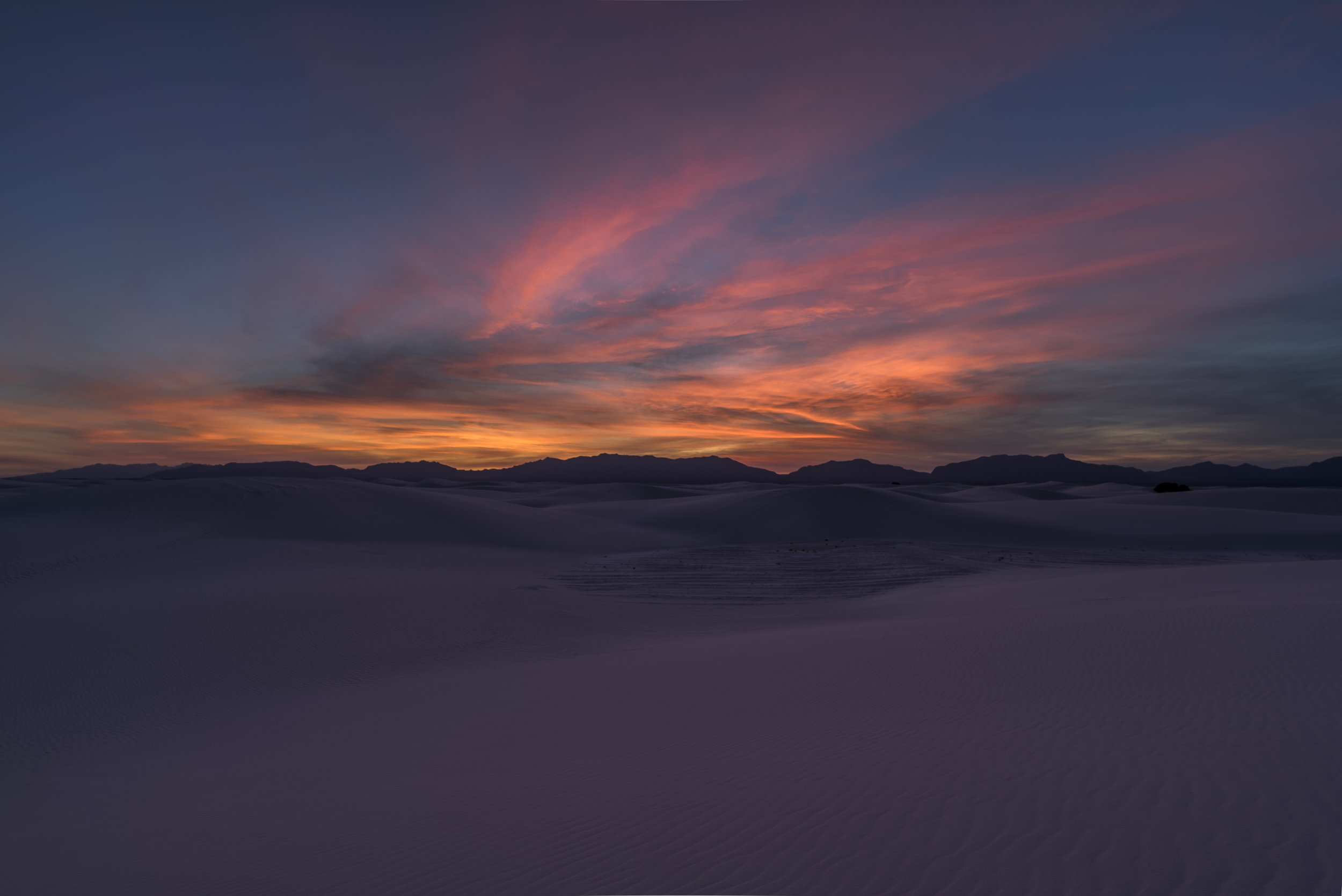
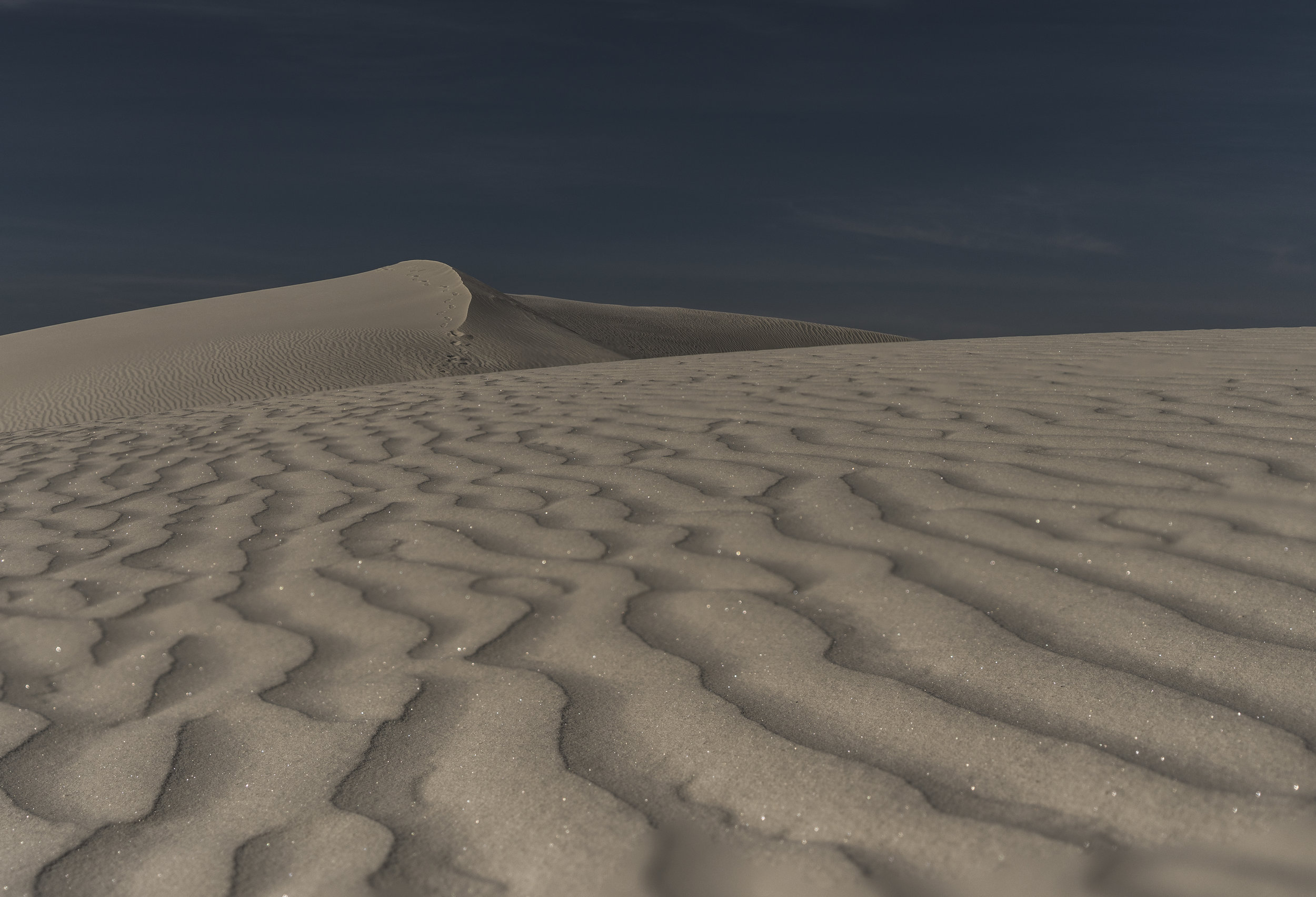
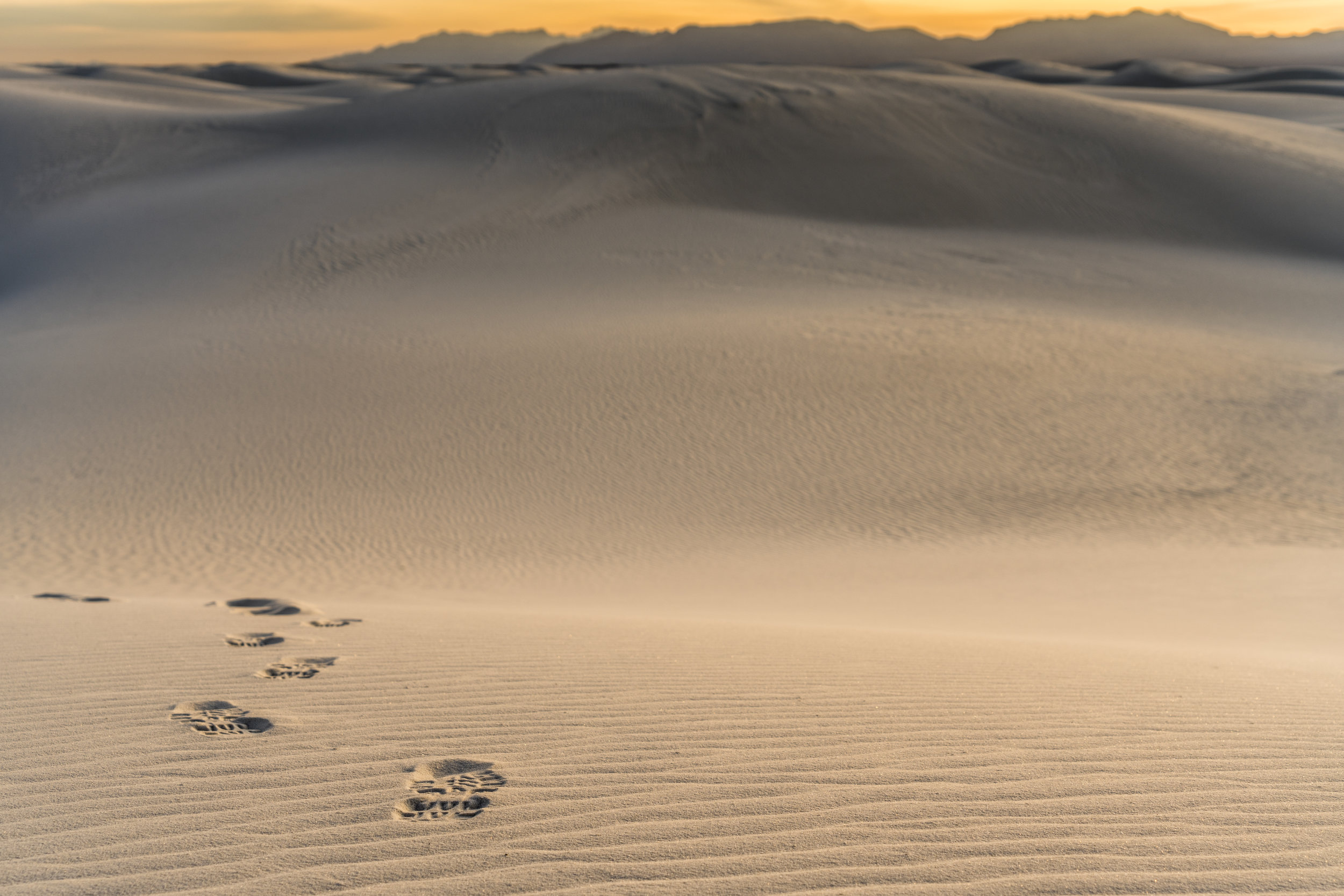

Technically not a strong photo. I have a better understanding of "bracketing" images, taking a set low, middle and high exposure shots and combining them into one, and will work to employ that technique more often, just like the focus-stacking I've been experimenting with.
Creatively, this is a favorite. It's warm, the glow feels right. The clouds and the horizon have a crispness that only a fast shutter can produce.
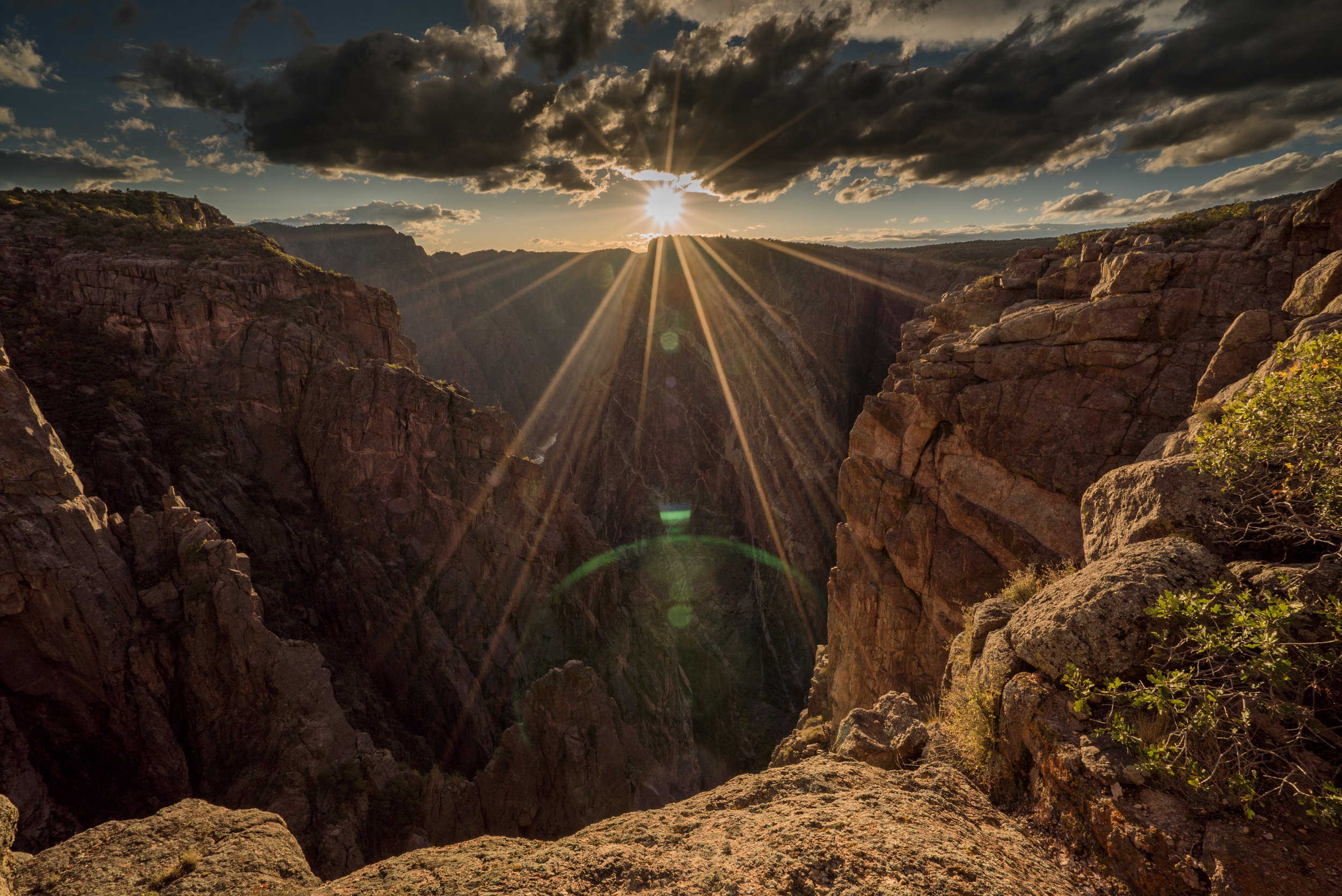
Colorado has so many treasures, and this one took me a long time to get to. I first read about the Black Canyon of the Gunnison when I was first living in Greeley and attending college at the University of Northern Colorado. I was then, as now, subscribed to a few different motorcycle magazines and as one of the monthly features, the Black Canyon was written up as a "must ride!' in Colorado. Fast-forward 21 years and I finally had a chance to ride this majestic feature.
This shot is obviously more recent, the Painted Wall is an iconic image. I definitely need to practice my set up and bracketing techniques to reduce the amount of lens flare, the green globs that you see. I do like the symmetry of the lens flare, they add a bit of character to the image; though technically it is a distraction, and a sign of a weakness in the lens, though few lenses can tolerate direct shots into the sun without some evidence of flaring.

Those ramparts, that reflection; a beautify tranquility abounds.
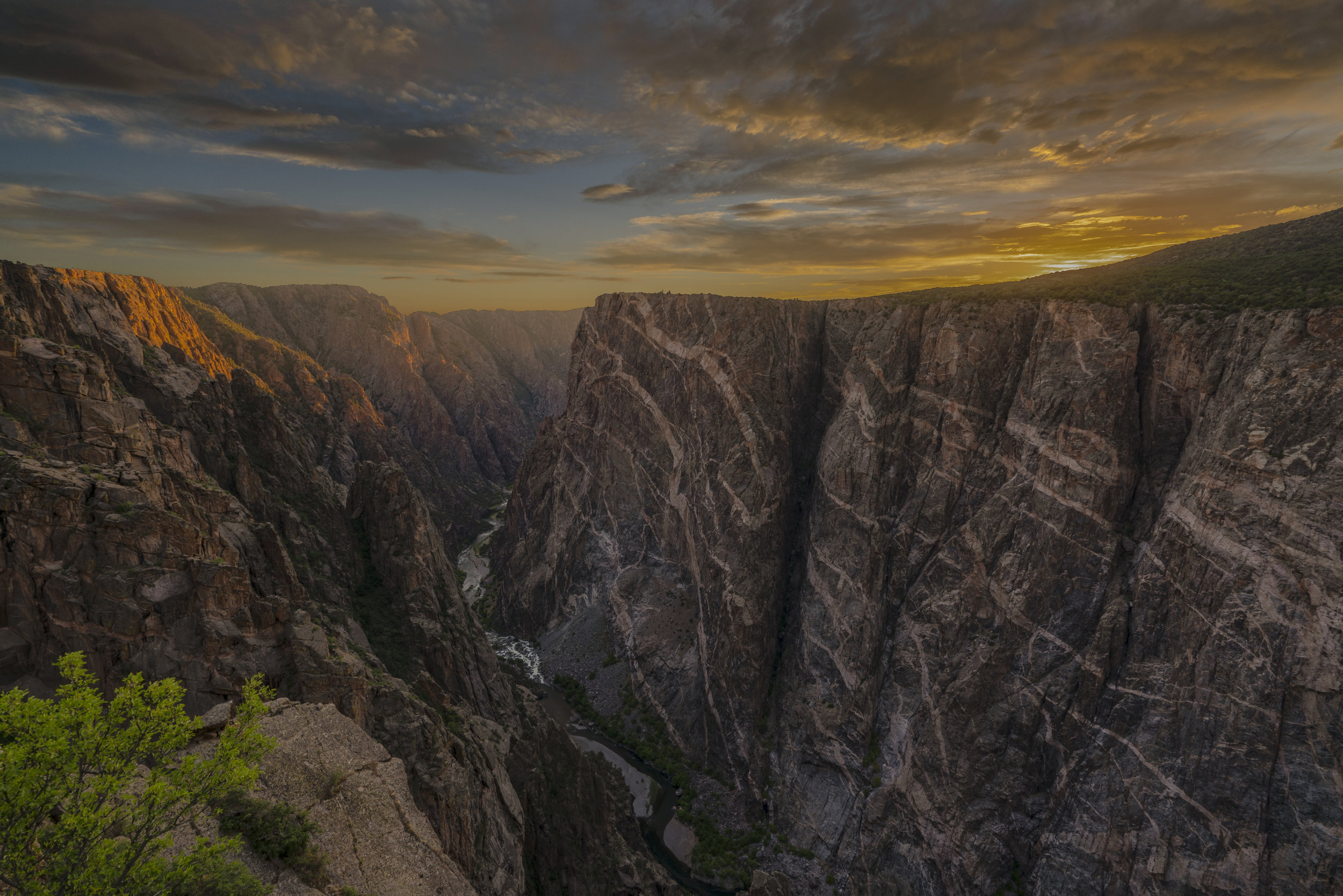
The thing I am beginning to really enjoy about photography is that I can see the same spot, the same site, the same composition, in so many different ways. Whether that be in a single day, with the changing weather and daylight, or throughout the seasons as trees, and snow, and light angles reveal different layers and textures.
The Painted Wall of the Black Canyon of the Gunnison National Monument is no exception to this phenomenon. I read about this place 20+ years ago in one of my favorite motorcycle magazines, and I finally visited it, on a motorcycle for the first time just seven years ago. Two trips in the last 9 months and I am hooked on this place. I just hope my photography can keep up with it.
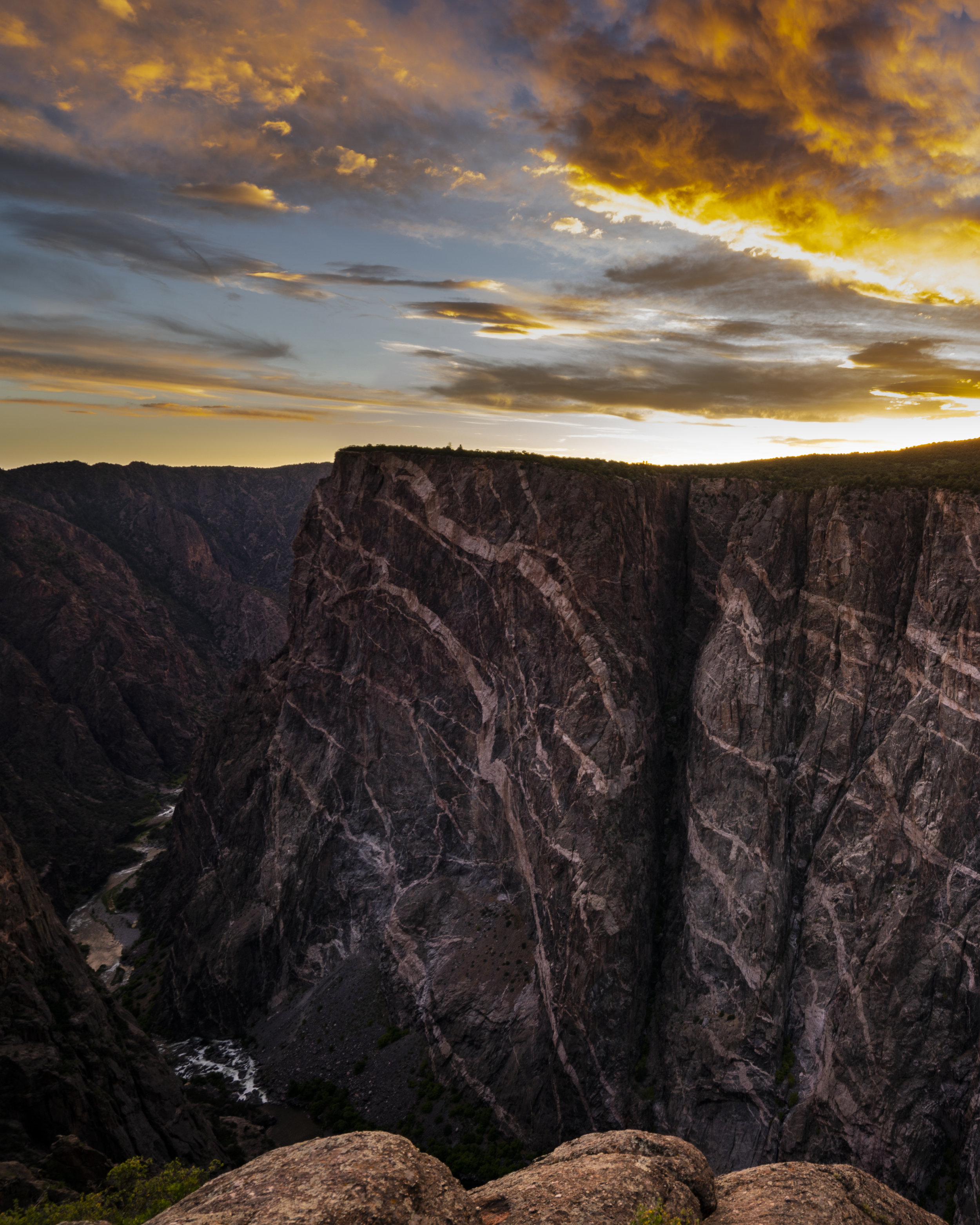
I need to find other locations around the Black Canyon, and I will. But for now this is a miraculous sight.
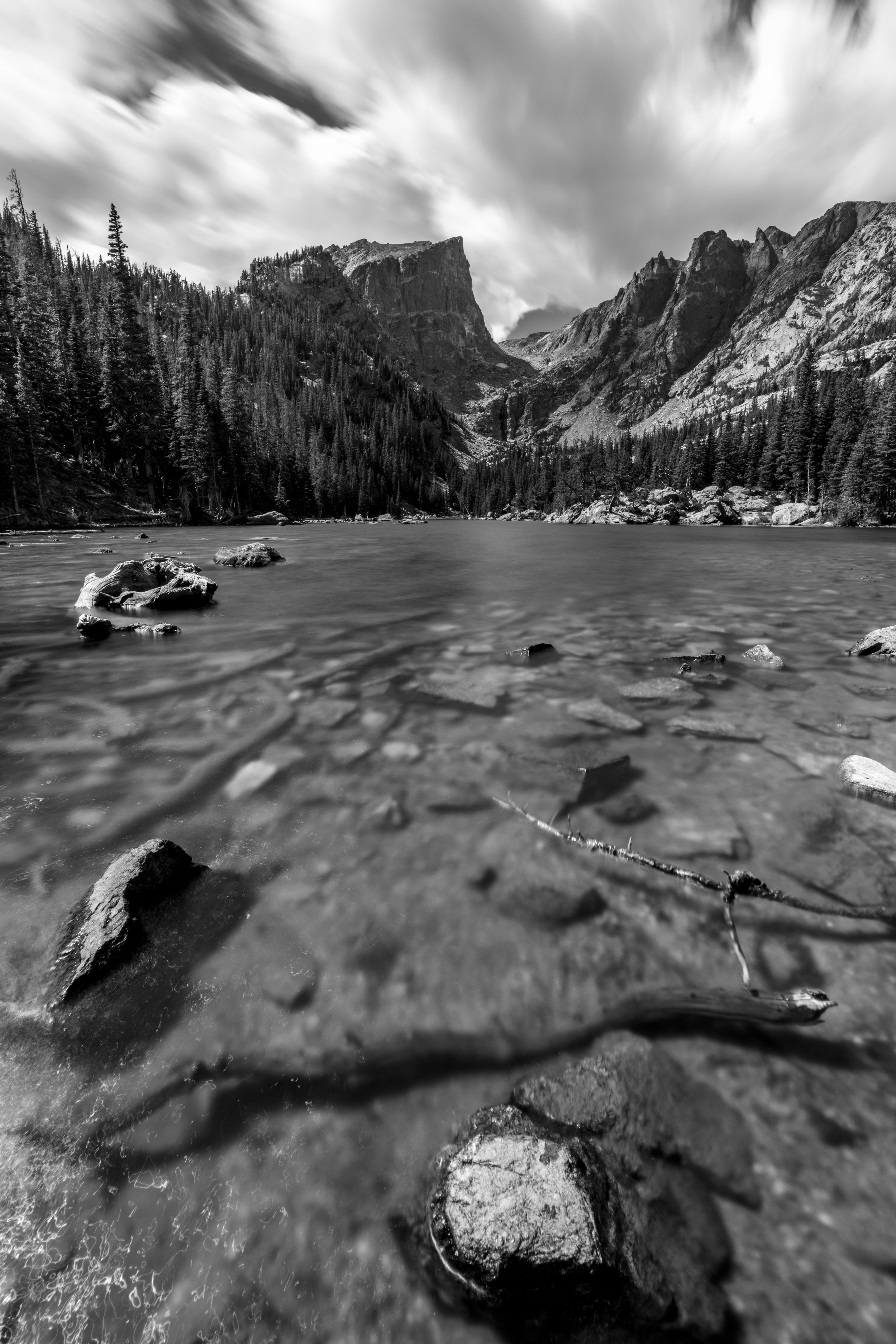
Dream Lake is another jewel in the RMNP Crown. It has so many looks and so many occasions to be photographed. Adding a black and white composition, with towering cumulous growing over the lake, I couldn’t have been happier with my first ascent to the lake.

Bear Lake is one of Rocky Mountain National Parks most popular destinations. It is set in in a cirque, the last of a series of lakes; Nymph, Dream, Emerald and Haiyaha feeding the drainage.
Mid-day images, with flowing clouds create the natural contrast. Keeping the shutter open for 30 seconds lets the world move and flow as it should.
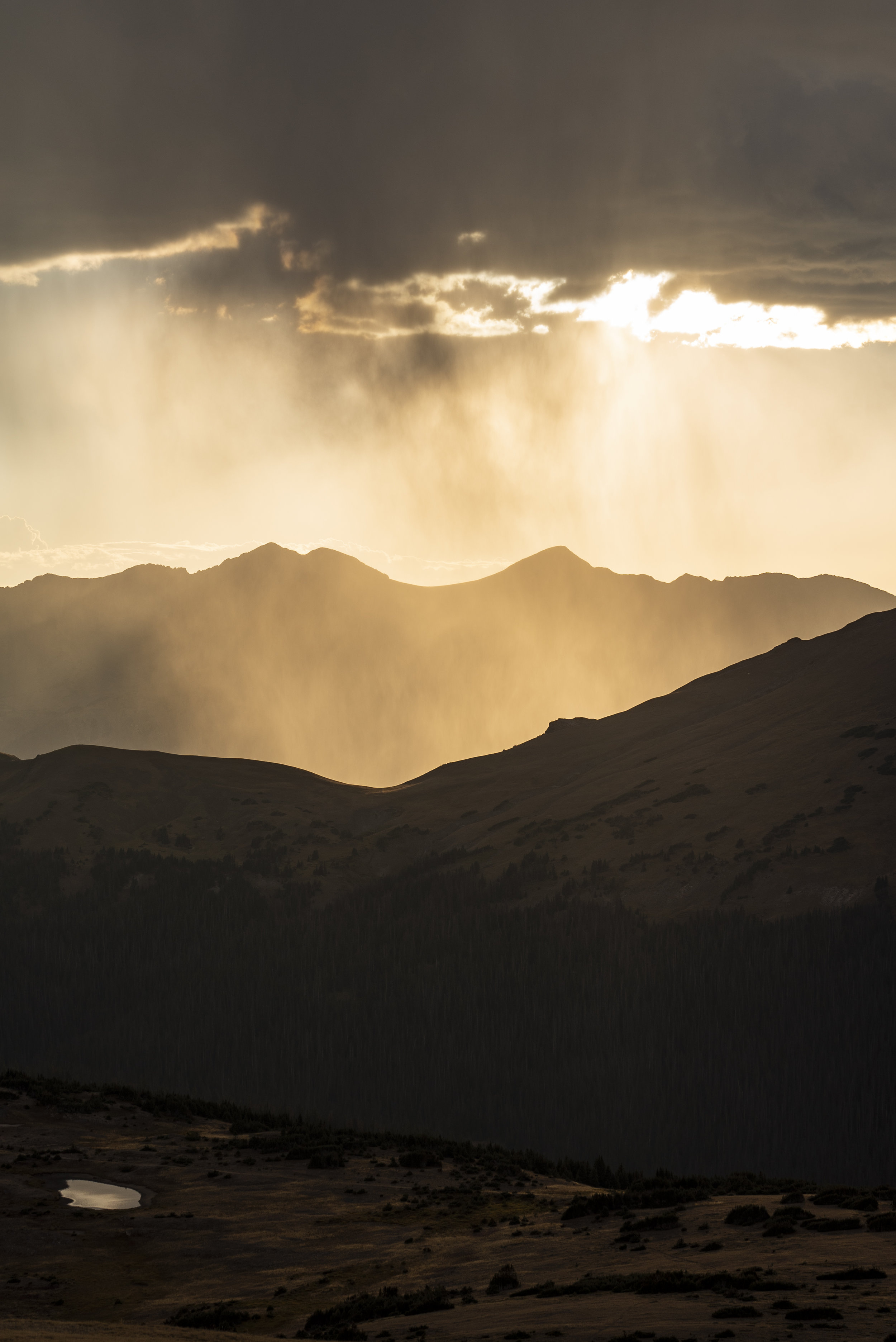
The north and western edges of Rocky Mountain National Park blend into the Never Summer Wilderness along a series of jagged ridges and peaks.
Capturing the changing weather and rush of clouds in the setting sun is always a true joy; shooting with the telephoto lens to draw in the details of the moment creating a dimension that we might otherwise miss.

The color finally arrived, though it was to the east and not the west. The gorgeous towers and trails of cirrus clouds reflected that last glow and the day was done.

My right knee is just about finished. 40 years of running, 50 years of living and 45 years of just being me have taken it’s toll. I’m guessing it will be a while before I summit a 14’er again, so tackling well marked trails is a grateful joy, a subdued sunrise waiting at the end on adds to the occasion.
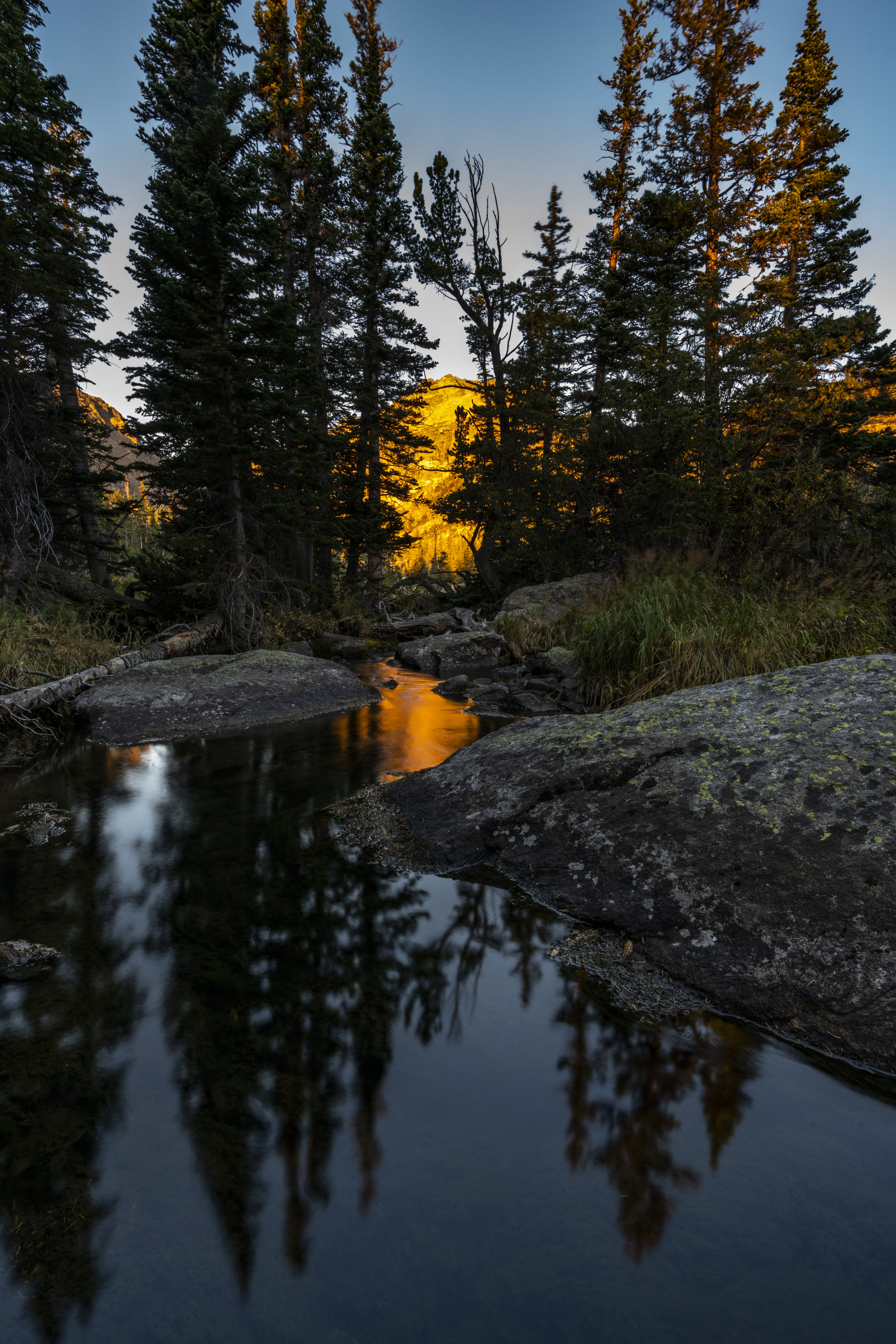

This is an edited Panorama. I cropped the original image to a 1x3 format. I would have preferred to shoot it in panorama to have more information to work with, but the rapidly changing light did not allow for setting that up.
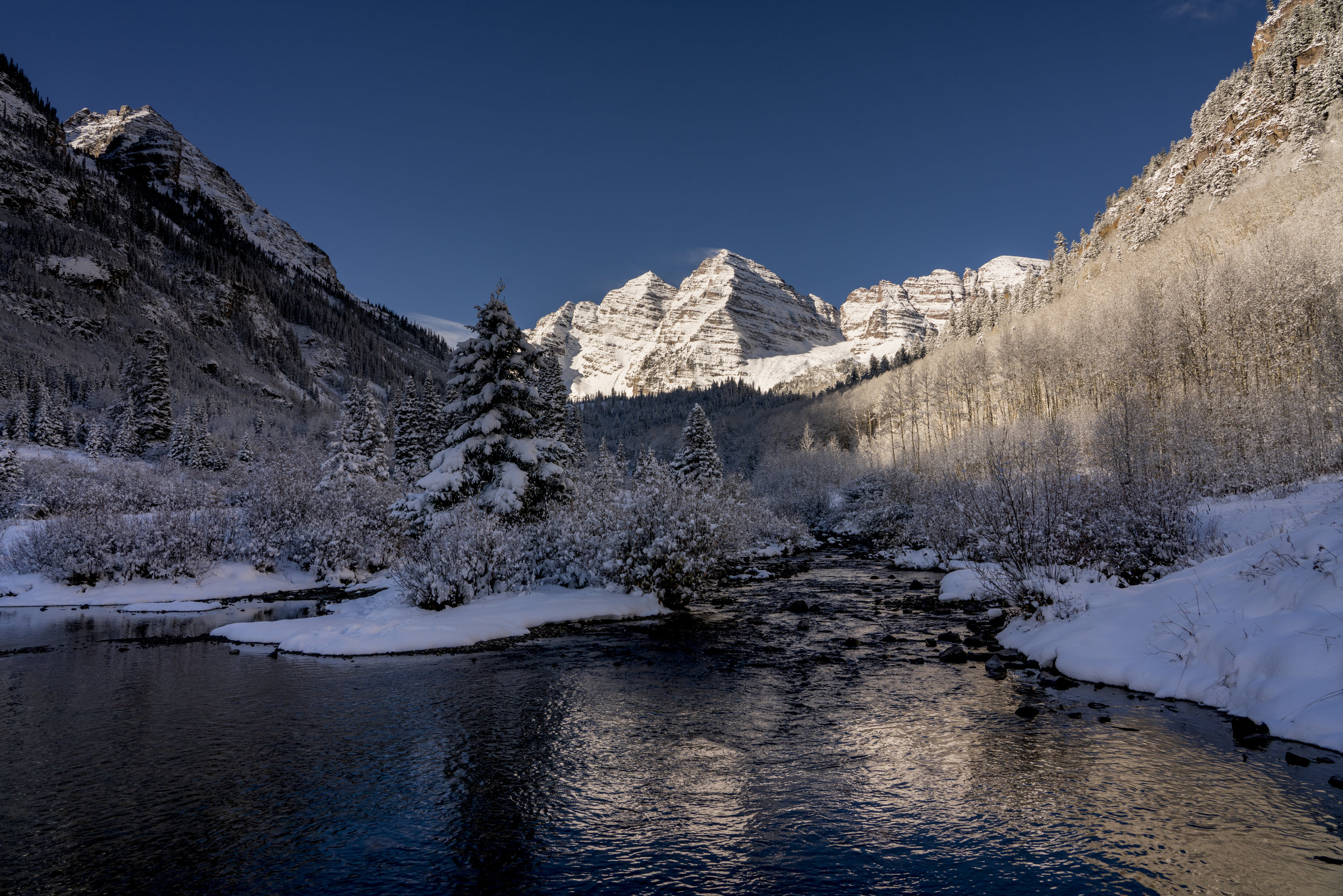
No filters, no long exposure, no focus stacking, just a single exposure, f/13 for maximum sharpness throughout the image, but lots of natural light on the subject.
I took this shot, and I walked away. It was a little over three hours of shooting, and I’m guessing I’ll never get to witness these conditions again. I do hope for more Milky Way photos, and a Spring or Summer storm will be added eventually, but the Bells are always best with their color, with their Aspens glowing in the morning light.
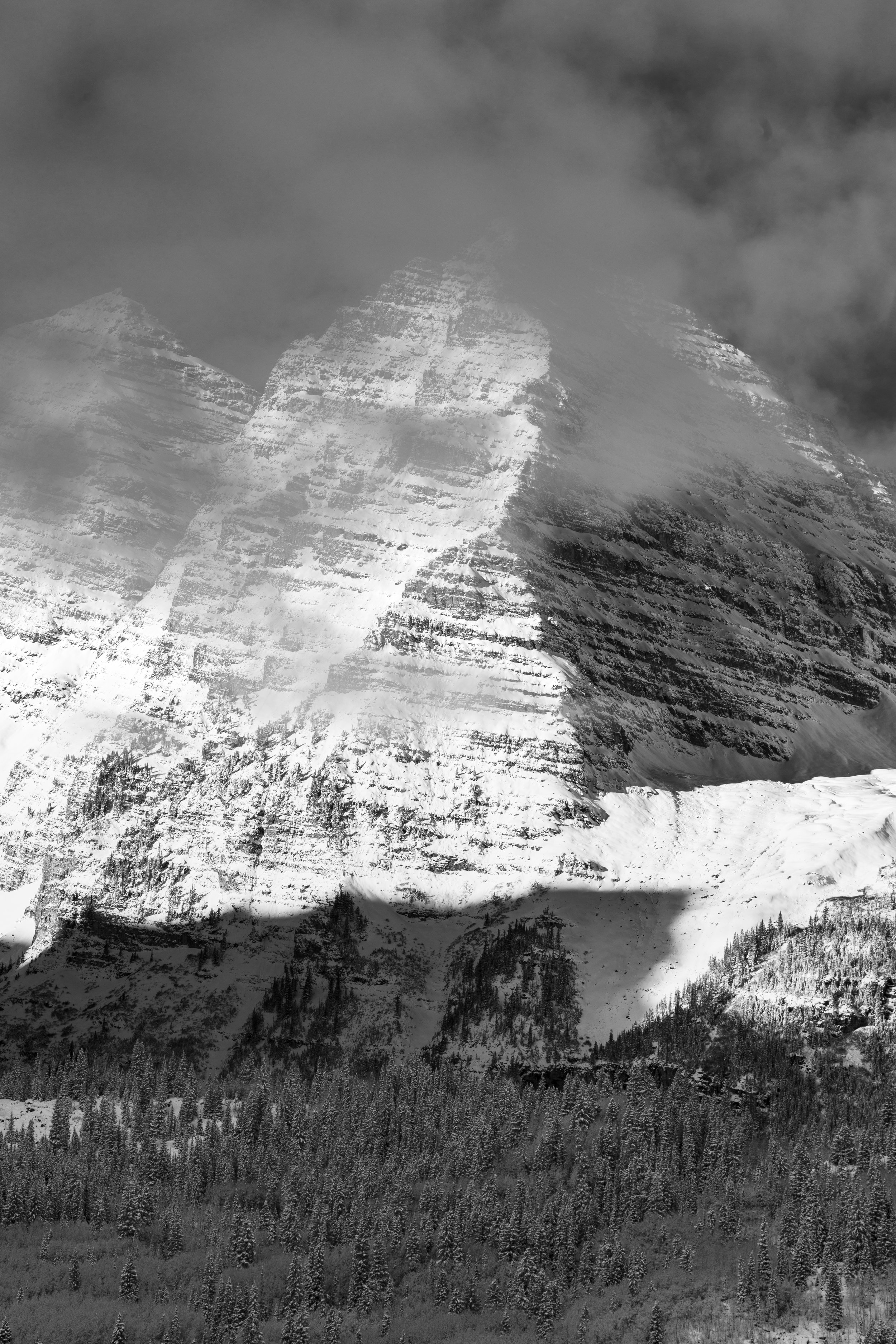
I’ve shot more black and white images the past two months it seems than I have most of the year. Bright, contrasting light, and heavy shading seem to be the prerequisite for black and white. So, that means shooting in the middle of the day, in places with lots of angles and shade and textures.
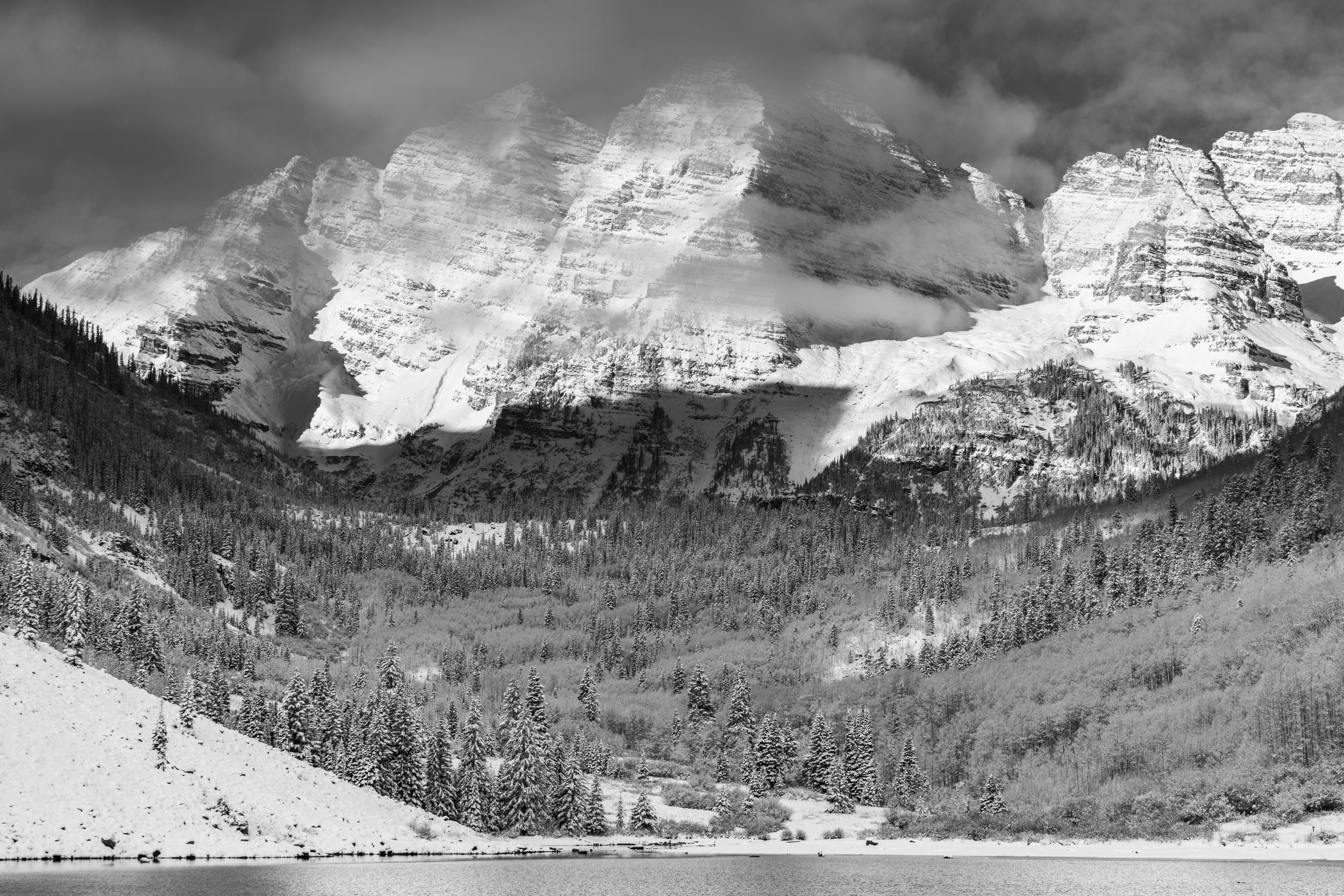
When the clouds finally parted.
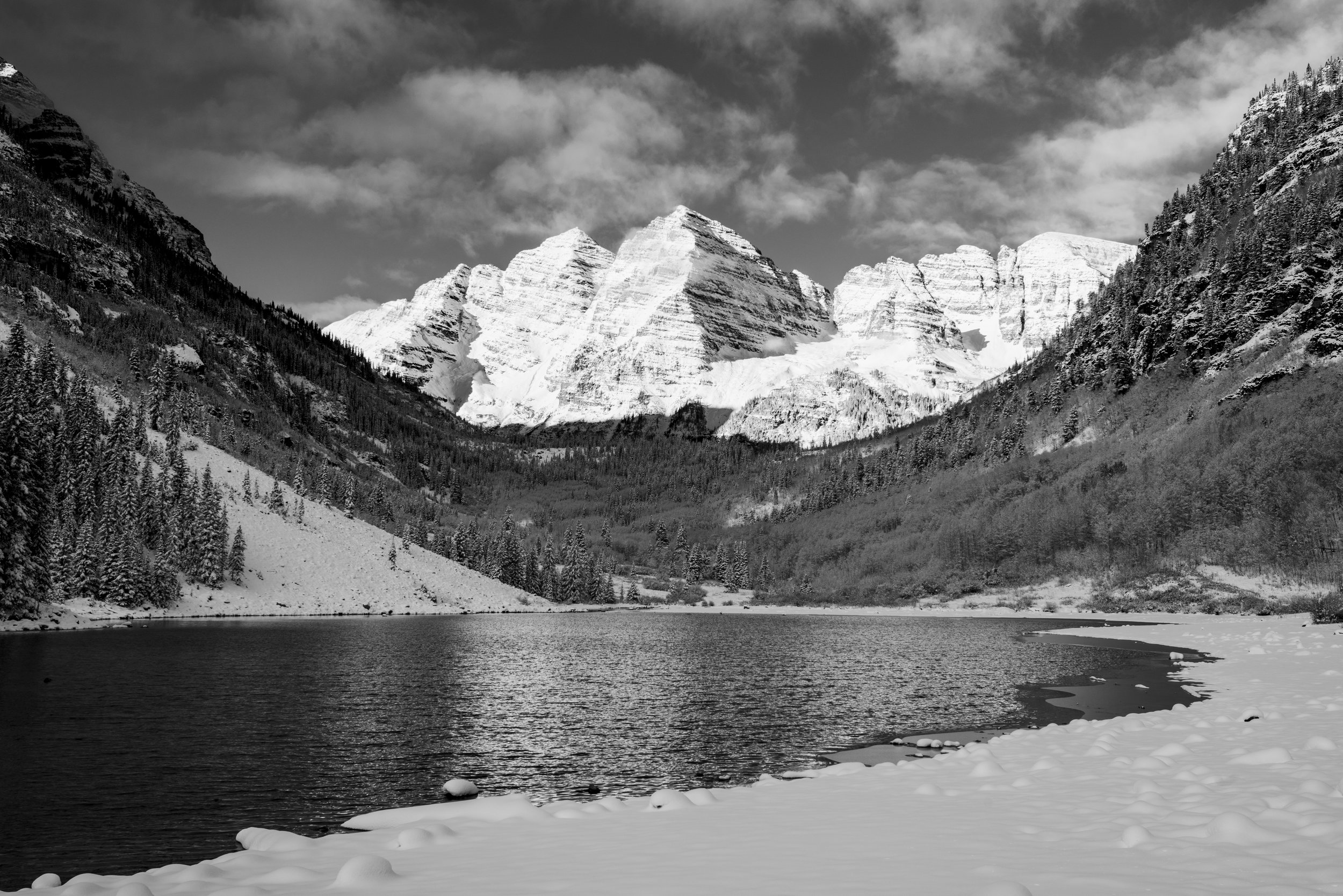
The temperatures were below freezing, and the clouds hung low over the lake and completely obscured the Bells from first light, until well into the morning. The backlighting wasn’t going to appear and a breeze came up to drive the temperatures even lower, but has the clouds thinned the depth of the snow became apparent and dimension that can often be missing in an image like this fit perfectly in.
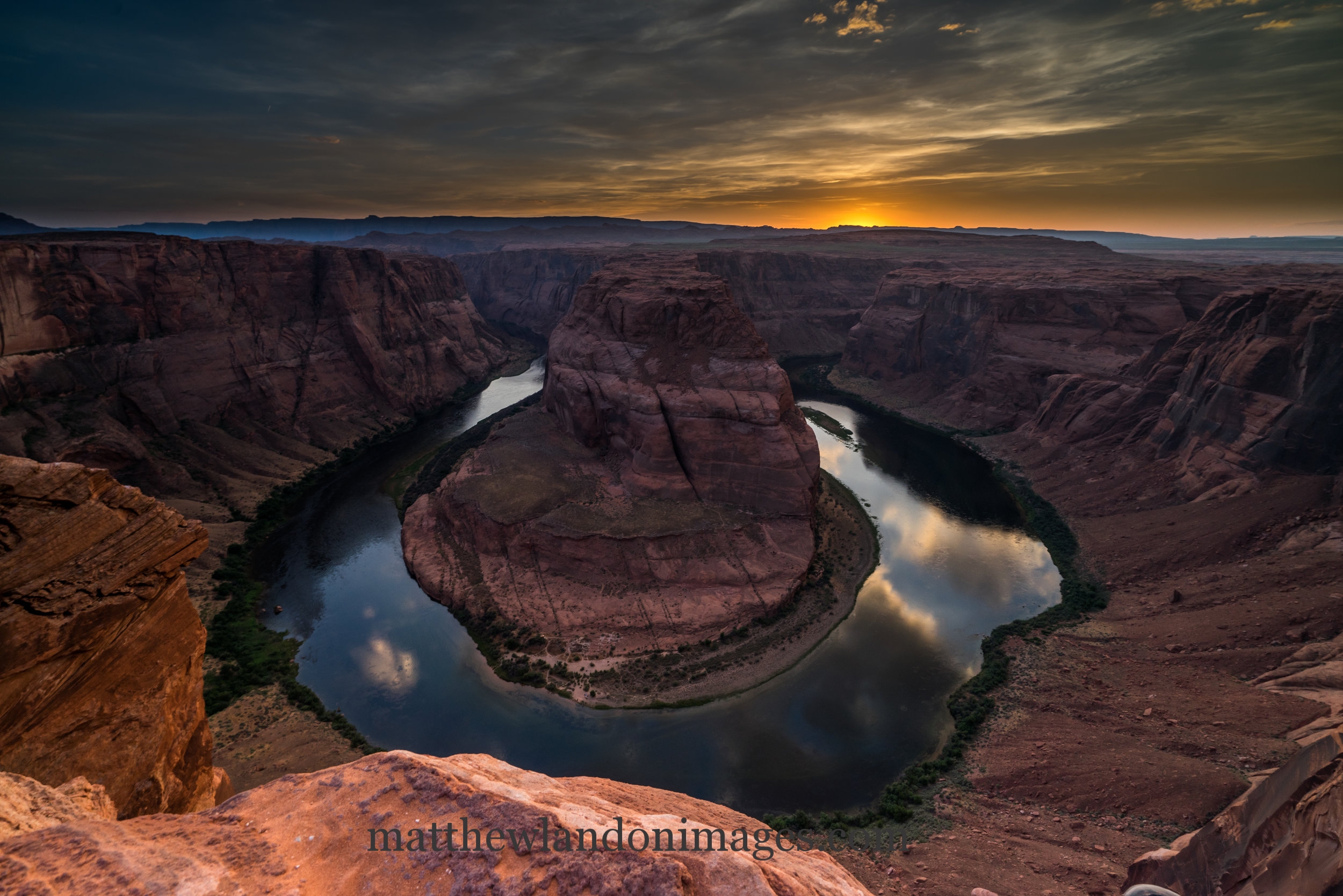
Had the original plans for damming the Colorado River gone through, the site would be filled with water, just like Glen Canyon is now covered by Lake Powell. I had the chance to explore and enjoy Lake Powell when I first moved to the west, but I am grateful now that only Lake Powell, Lake Mead and Lake Havasu stem the flow of the Colorado River.
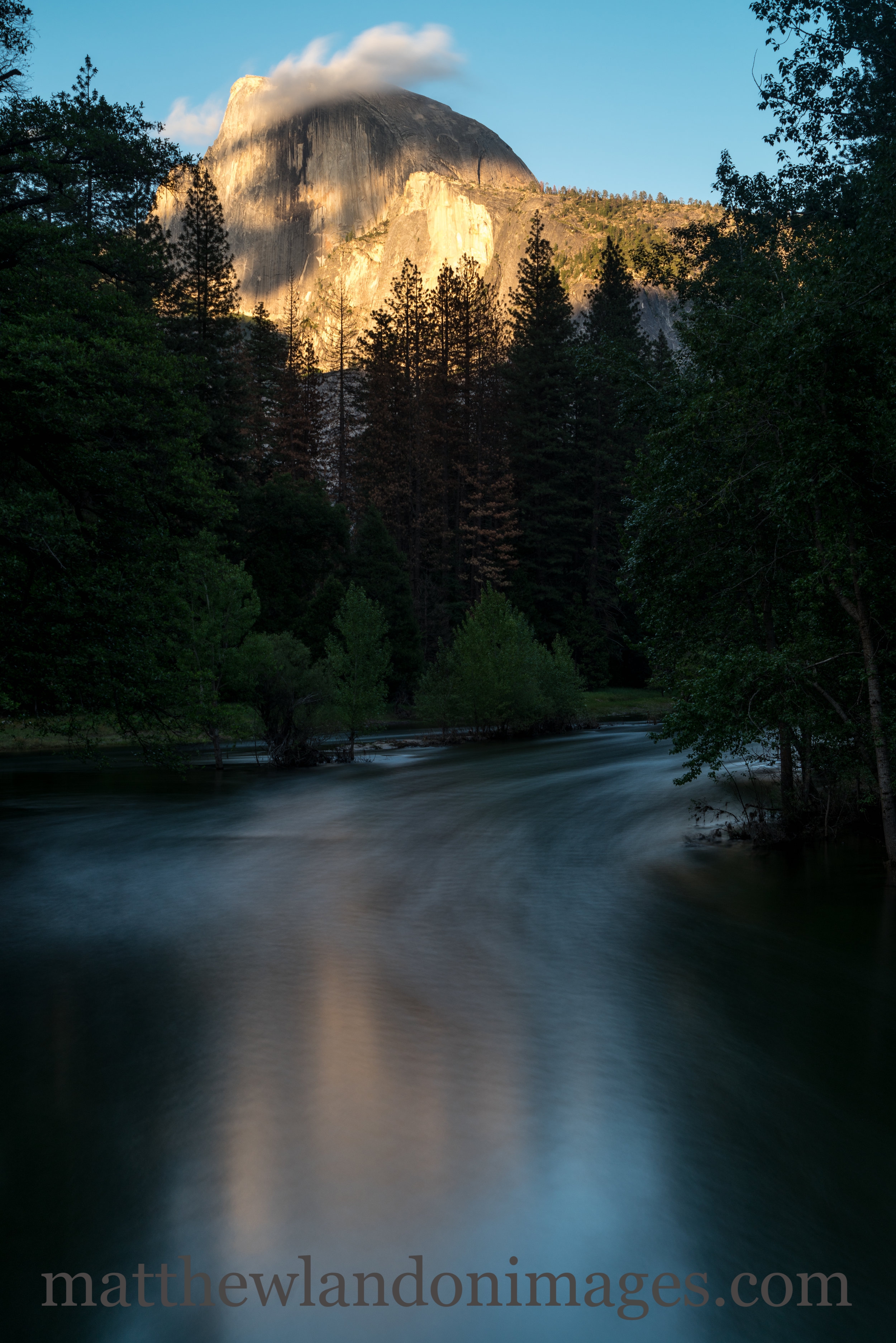
Yosemite is best taken as a destination and not a throughway. I learned that lesson with this trip. Again, I'm a geography teacher, but for some reason I didn't understand the layout and accessibility of Yosemite, regardless of the number of maps and descriptions I poured over. Needless to say I will consider this a "reconnaissance" trip, as I will go back to Yosemite, and stay in the park, for an extended period of time.

A hallmark of the Yosemite Valley, this year the water falls are at their peak. I'm sure I'll edit this as a black and white, but I do enjoy the vibrancy of the colors.
Apparently, there's a "Moon-Bow" that can be caught during the night, when the moon is out. I definitely want to try to capture one. For now, I'll be content with this image of they falls.
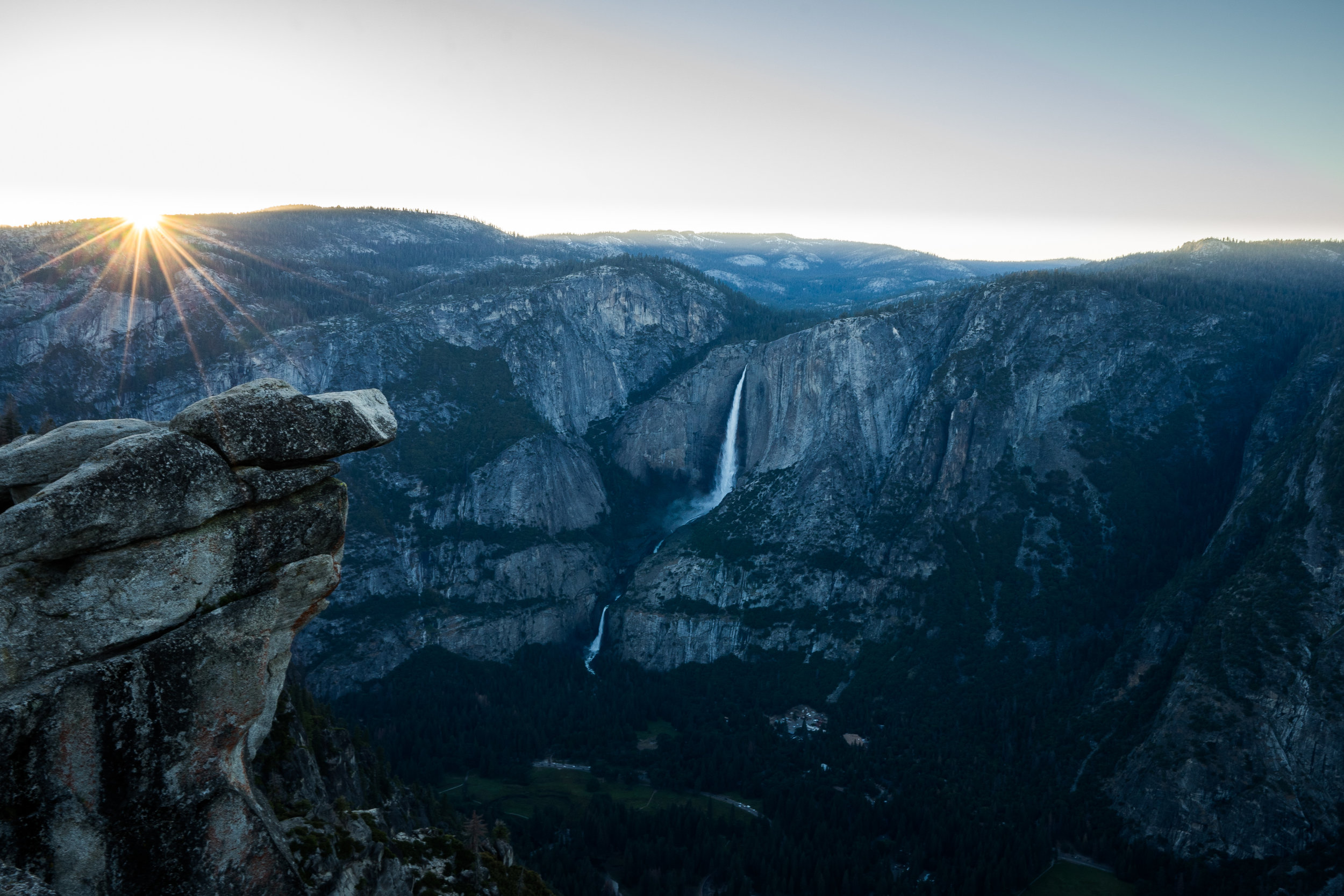
Again, my pictures, timing, and and patience do not do Yosemite justice. I do like the sunstar!
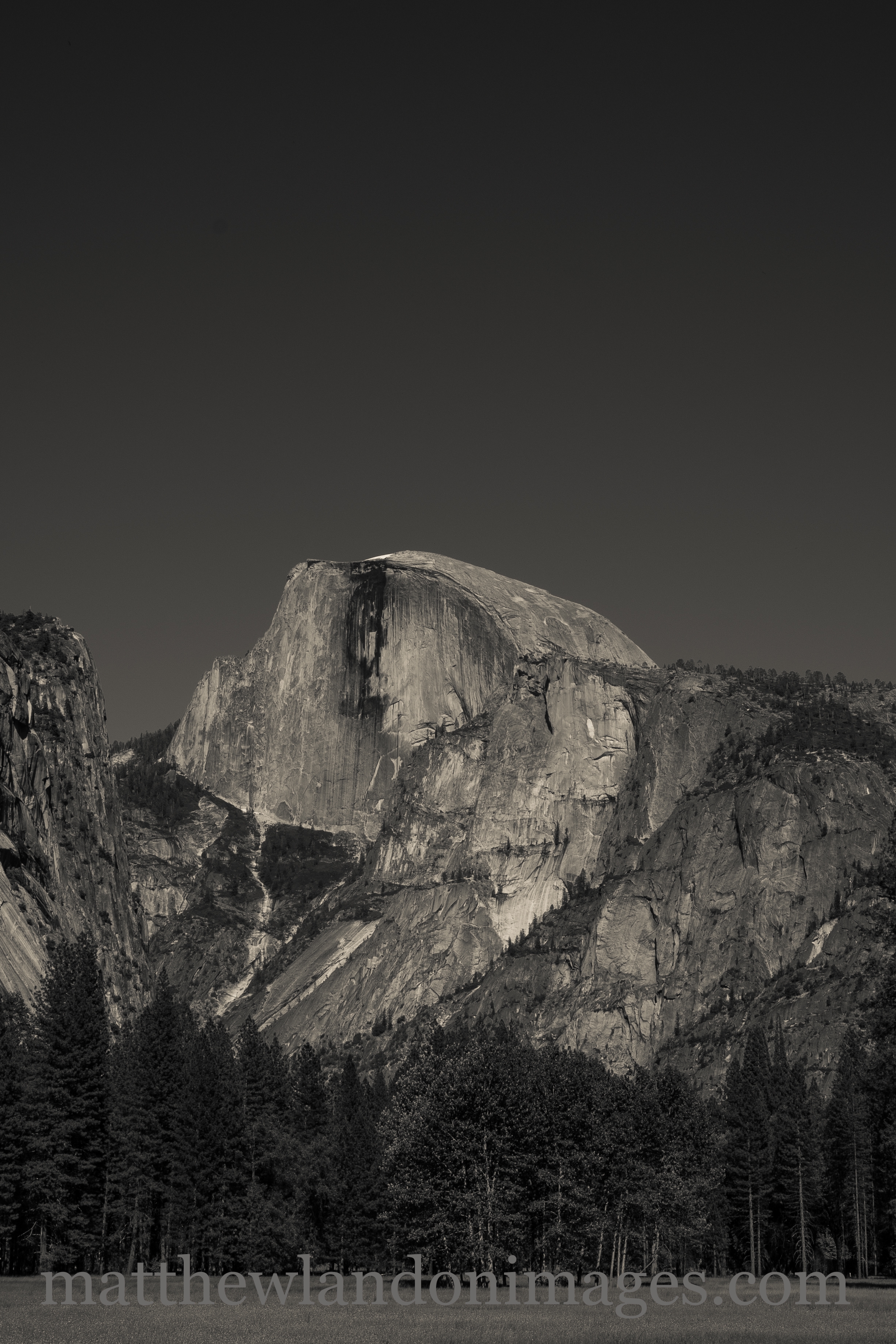
Title says it all. I was overwhelmed by the scenery in so many ways. Overwhelmed by the beauty, and by the scale. I took a lot of images, very few though that seem to give this place any real justice. This is probably the cleanest, and technically correct shot from the park.
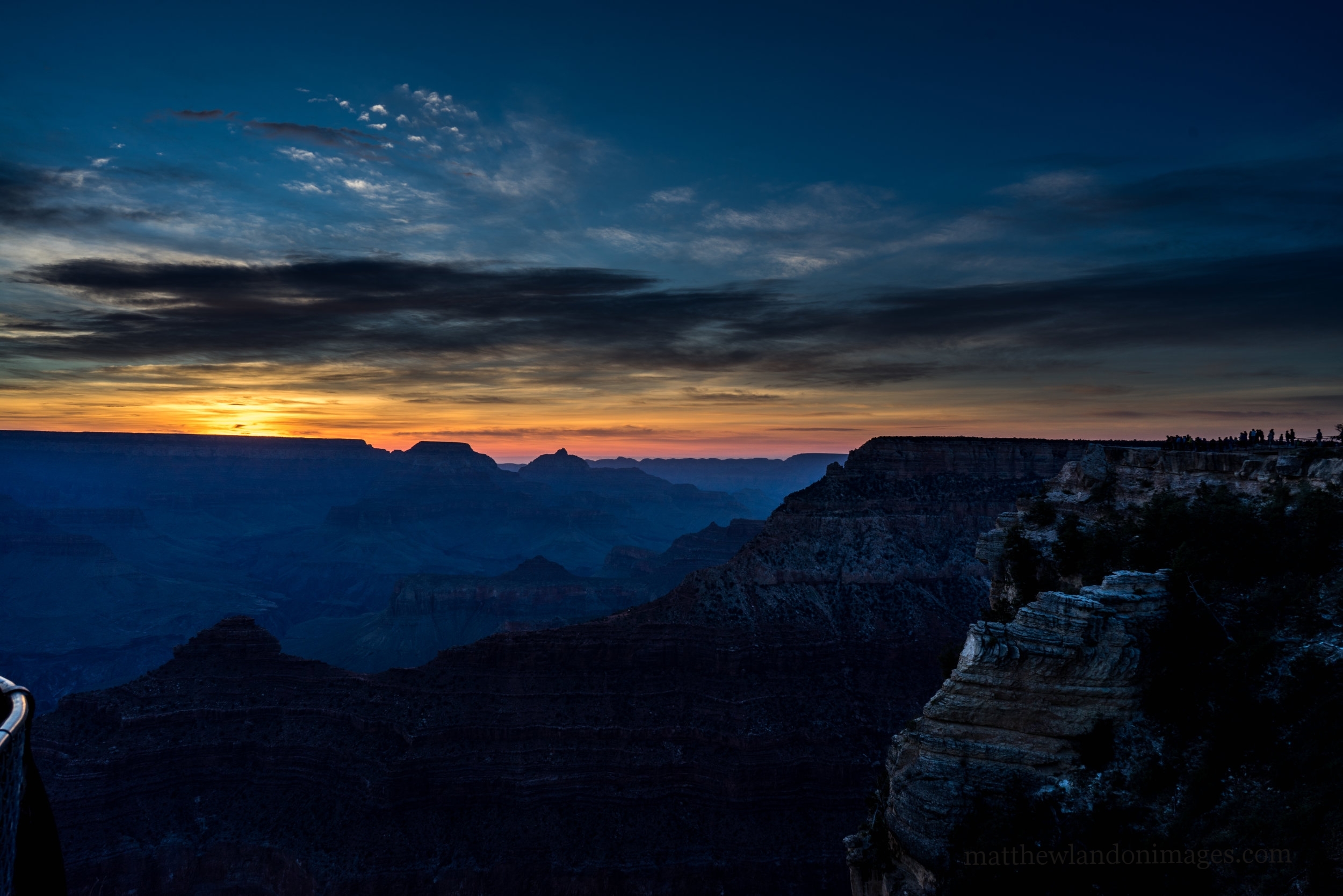
People gather early and late to meet this testament. It's well worth it, dusk or dawn.

This was my second trip to the Grand Canyon, and I'm going to commit to return as often as I possibly can. It is only a day's drive from Denver, and once you're there the transit system will move you freely and easily about.
The first trip was on overnight, returning to Colorado after a week in Southern California. I'd set my camp up quickly, then headed to the park to view the sunset. Breathtaking to say the least. With only an iPhone at that time, the images I took then were a huge inspiration to return.
This trip was two nights, which again, admittedly isn't nearly enough. I had a better plan of what I wanted to see, but was really rushed in making it all happen. I still want to hike to the canyon floor, I'd love to overnight at Phantom Canyon Ranch. The next trip will be four nights, staying in the park, it's just too beautiful to miss.

Not only is the scale of the Grand Canyon difficult to manage and put in perspective, but so is the light. I walked around very much like a tourist during my two days at the Grand Canyon this trip. I wanted to see as much as I possibly could, which is really difficult, even with a well made plan.
Again, it's about slowing down. This is one of the few midday images that actually worked. It's a huge file, over 30MB in its RAW form, I reduced the image quality in order to get the upload, but really like the riot of colors that exist.
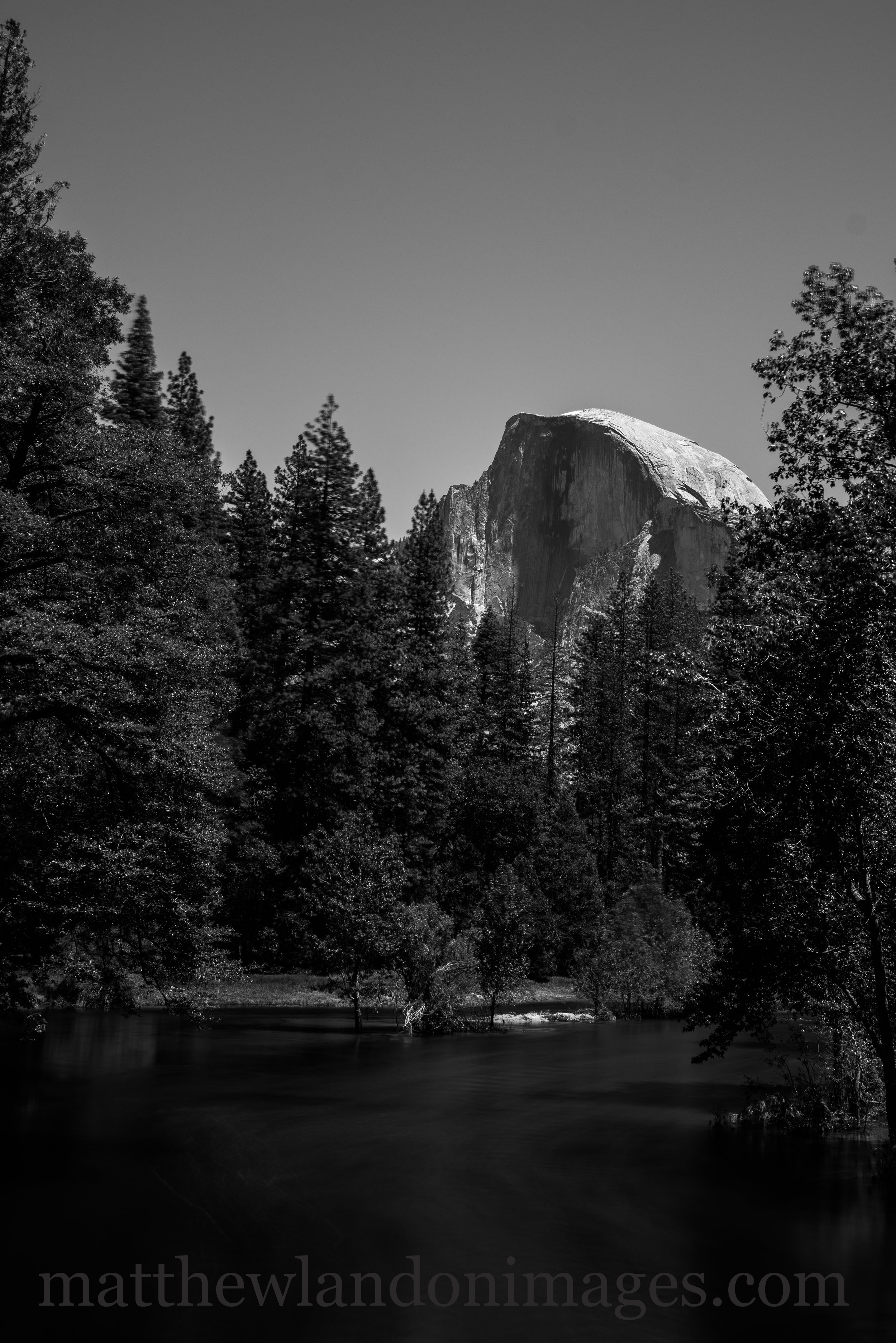
Yosemite truly is as mythical as it's perceived.
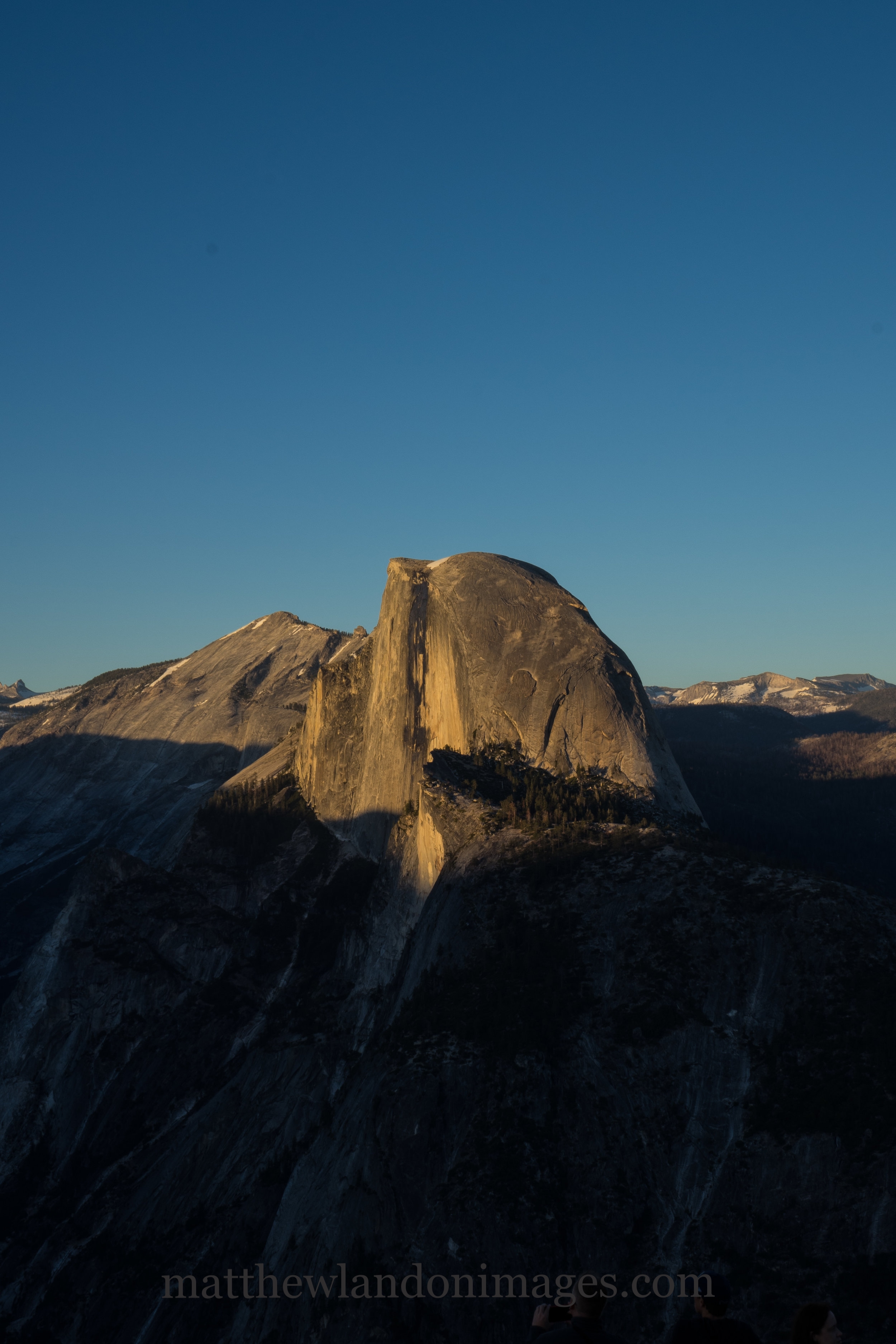
There's an incredible view of Half Dome from the road about a half mile to the east. The road and trees create a beautiful frame for the edifice, and it's just kind of spectacular when you catch it just right. I didn't, once again. In my rush to "get to" Glacier Point, I missed what is in my mind the best image of Half Dome.
Next time...
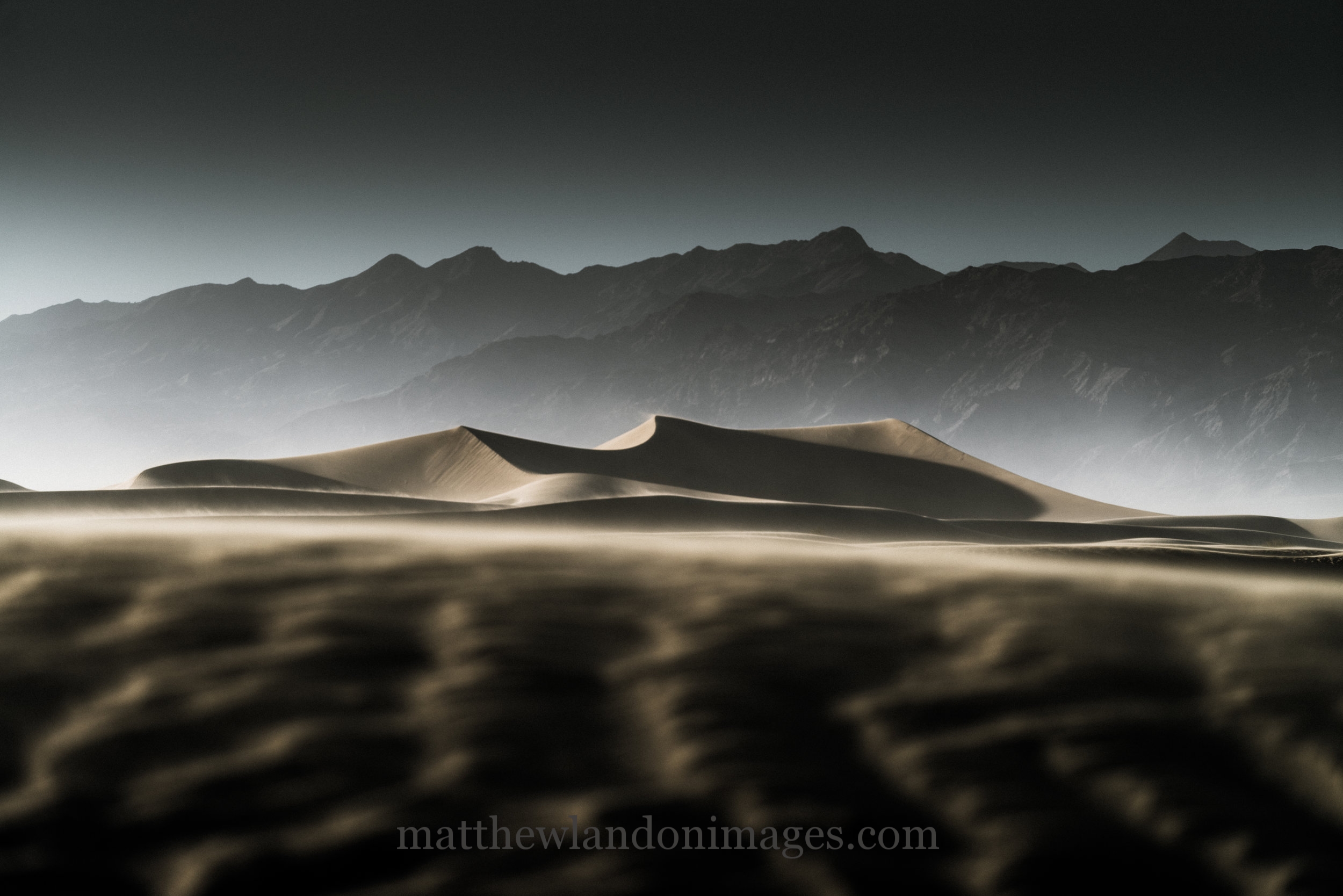
SO... a couple of comments on this image. First, Death Valley was a total accident, at least in terms of arriving there. Yes, I am a Geography Teacher, but spatially, things don't always work out in my brain. I just always place, on that little mental-map in my brain, Death Valley much further south then it actually is. I don't know why, I just do?! So, when I realized that I had the option of driving through it on my way to Yosemite (which again is another long story), I was really excited! I will say it over and over and over again, everyone of these stops deserves multiple days of exploration, Death Valley is not an exception. Furnace Creek, Artist Palette, Badwater, Dante's View, the Race Track and of course Mesquite Flat Sand Dunes, all deserve time devoted to explore.
My second point with this image is the point about "processing." Photoshop and other image editing software have been around for a long, long time. Any digital image that you look at has been in some way, shape or form "edited" before you actually view it. Even my iPhone. It is a computer, it takes "the best shot" it can, AND THEN runs it through its processor before you get to see it. This is context, because I do want you to understand that there are very, very, very few images that come out of a digital camera and that do not require some work. For me, that is part of the enjoyment! Reliving the image over and over again while I sit comfortably playing with varying sliders and presets to recreate the image that my mind captured, but the camera didn't. All photographers are trying to tell you a story, digital editing is the prose, the adjectives and adverbs and punctation marks that bring the meaning we want to share with you to life.
That said, this is a piece of "digital art." I say that because what you see here is an image that would not, and could not happen, period. The way the filter/layer was applied to this image and the way it took the blowing sand and blurred it out, that doesn't happen in nature, period. This is a piece of digital art, and I personally enjoyed to process of creating it.
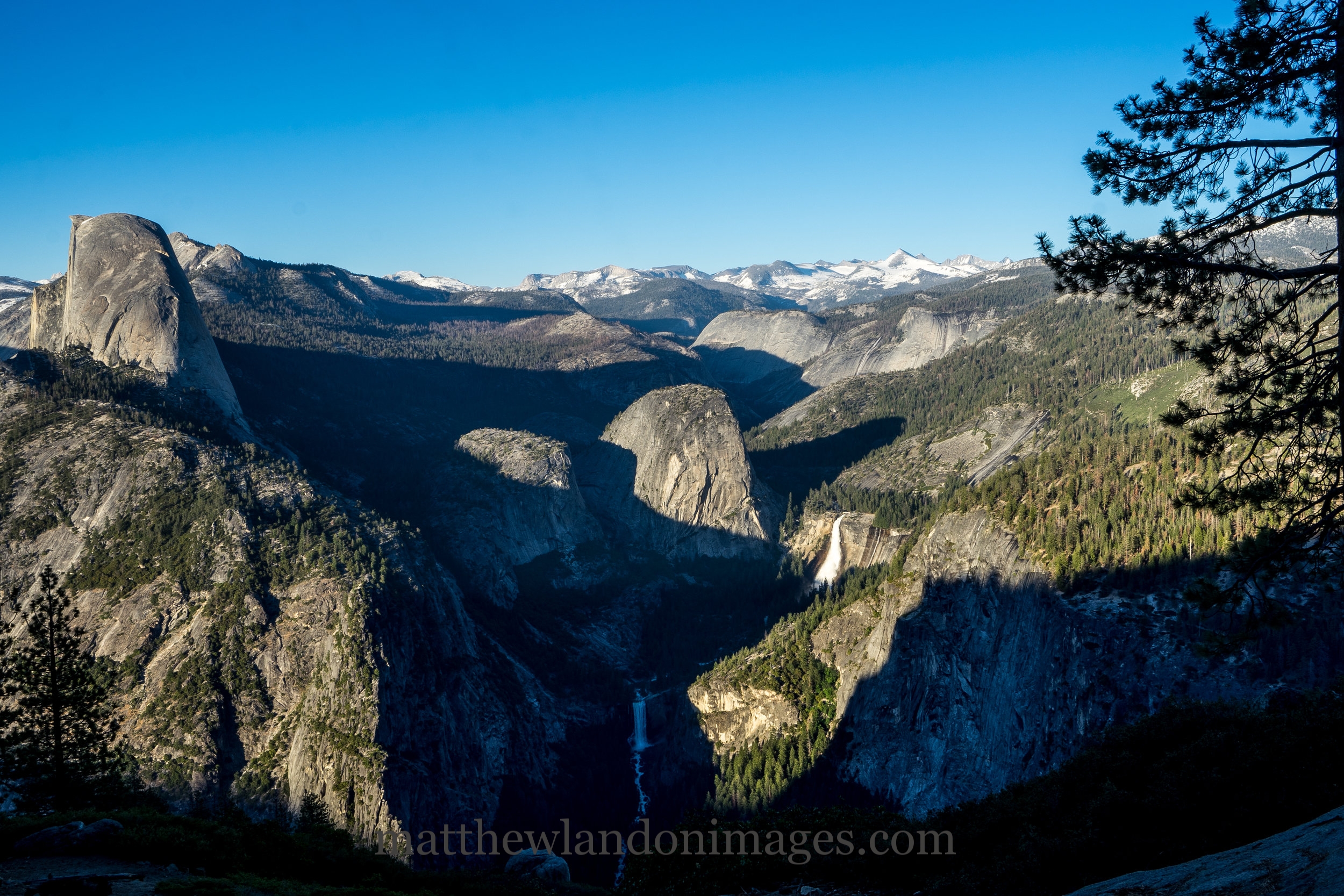
Again, my pictures are falling short on so many levels. This one, especially. But, it's a breathtaking view nonetheless.
Systemic problem for me. I tried to put too much into this trip.
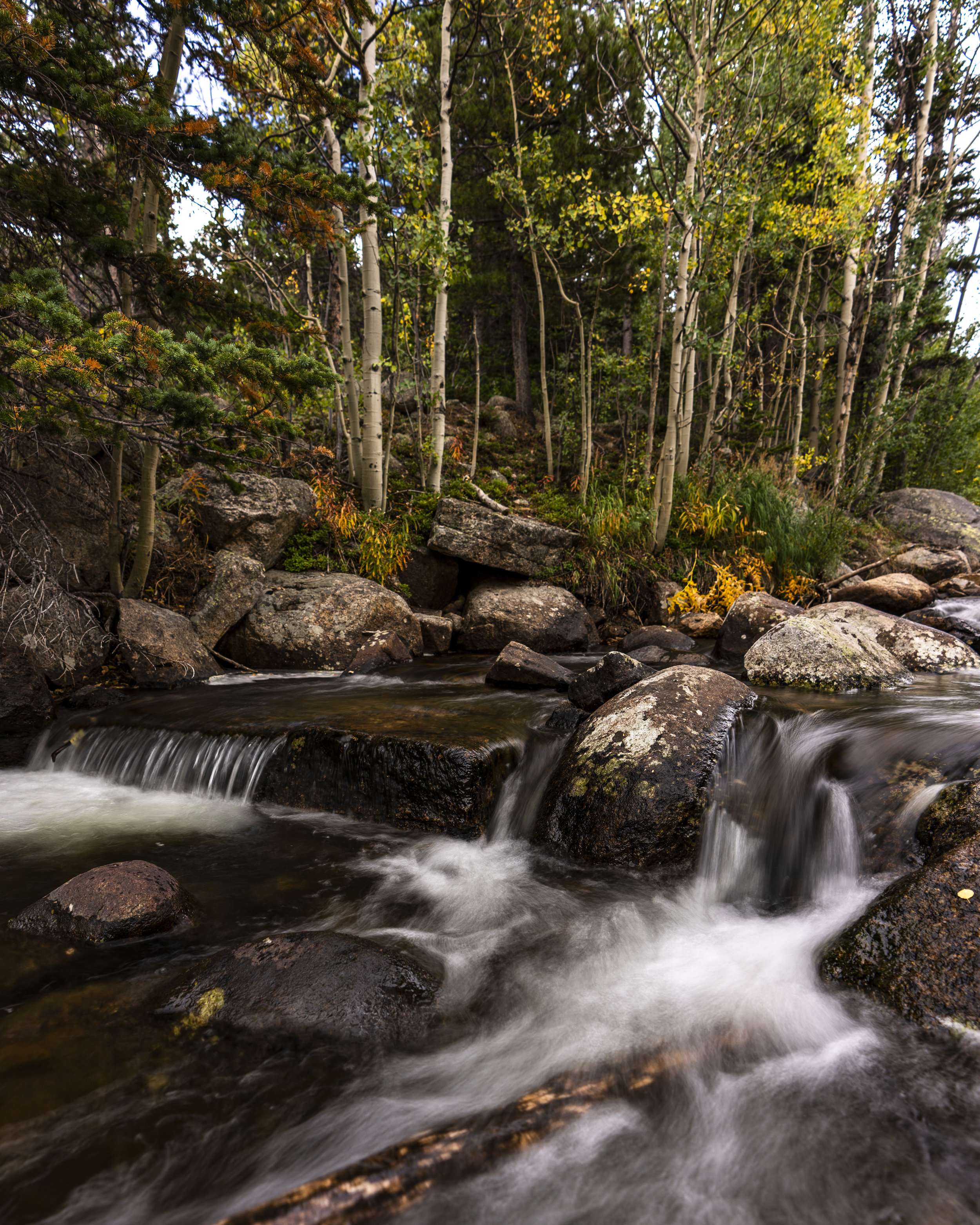
The Fall’s colors are elusive if not enthralling. Trying to capture constance and motion in one image.
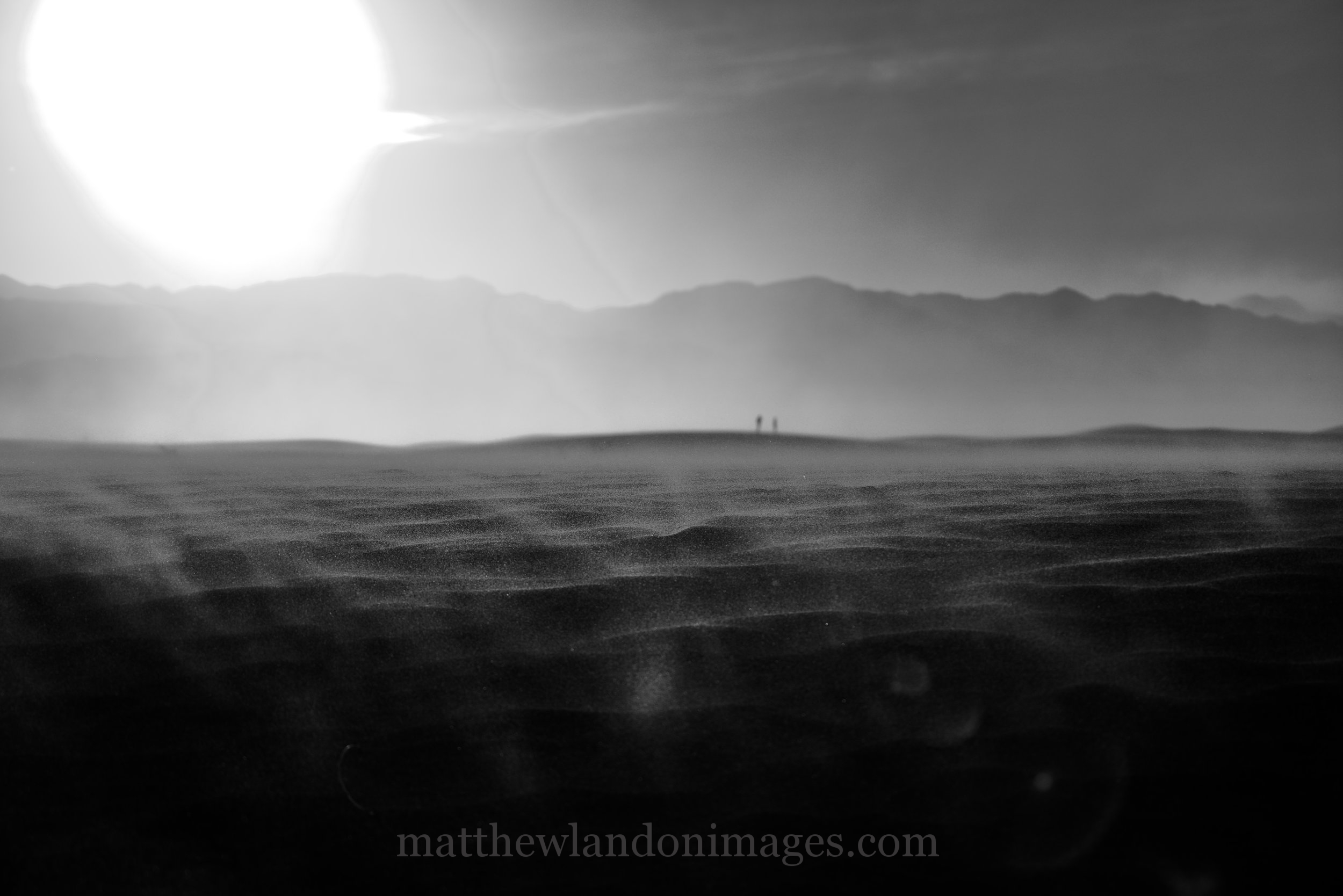
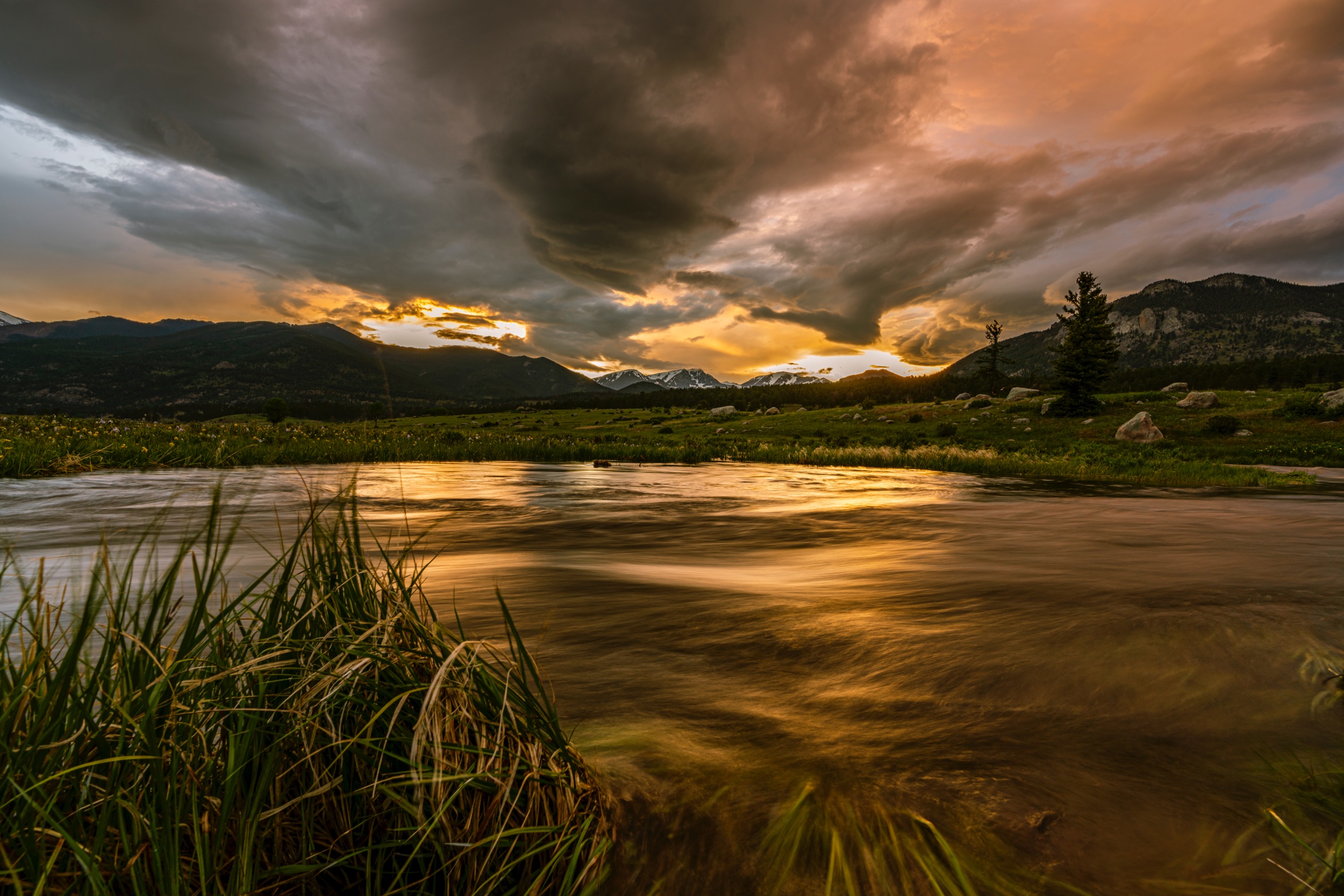
An unpredictable afternoon turned into a moody evening in Rocky Mountain National Park. Sleet, rain and hail gave way to brown and golden hues, and the 1/4 second exposure captured the ferocity in the moment.
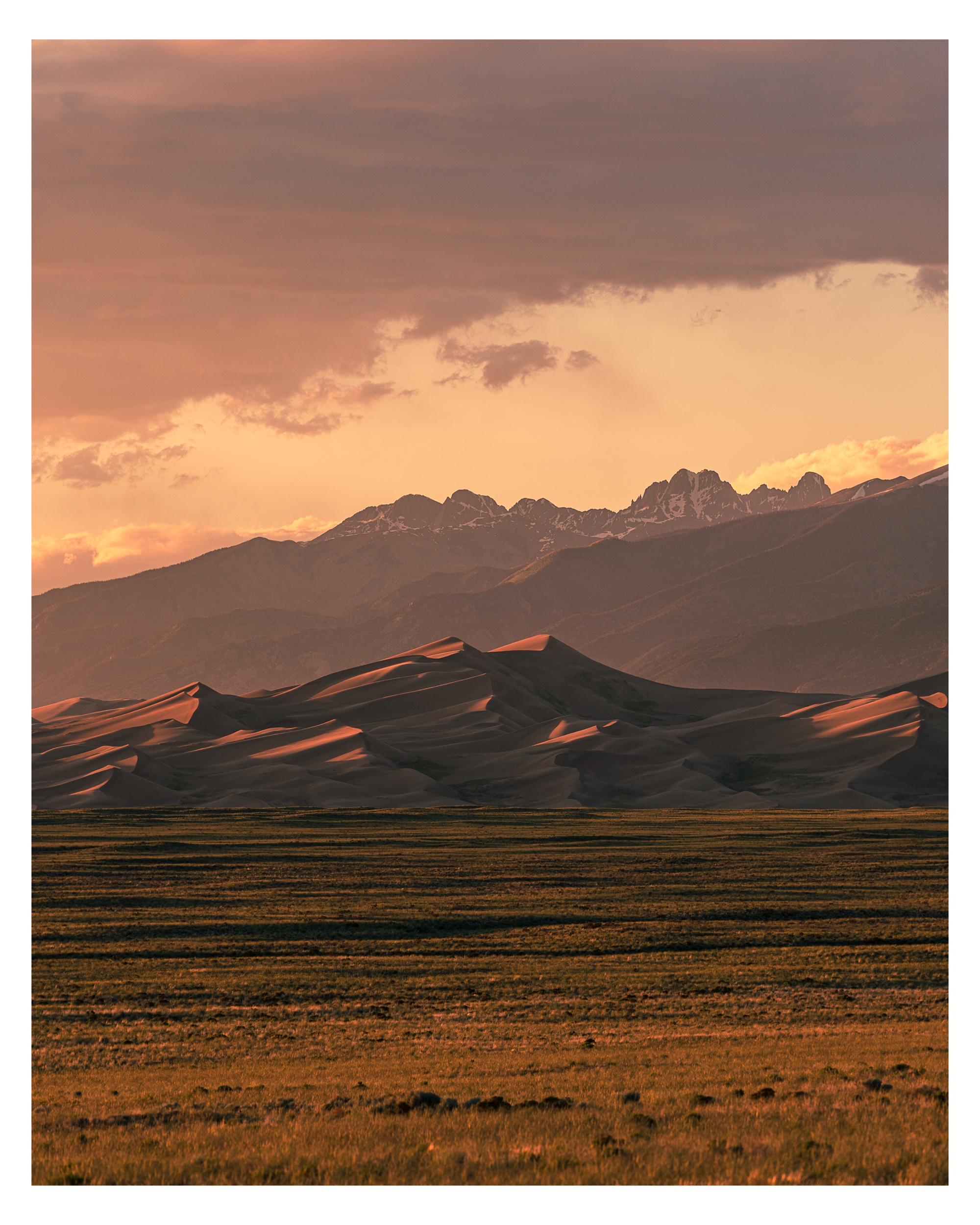
Little did I know just how much this spot would root my life. Trips 31 years ago, trips with my sons, they’re own adventures with friends and classmates and now photographing it. The Sand Dunes never get tiresome. Taken June 23rd, 2019.
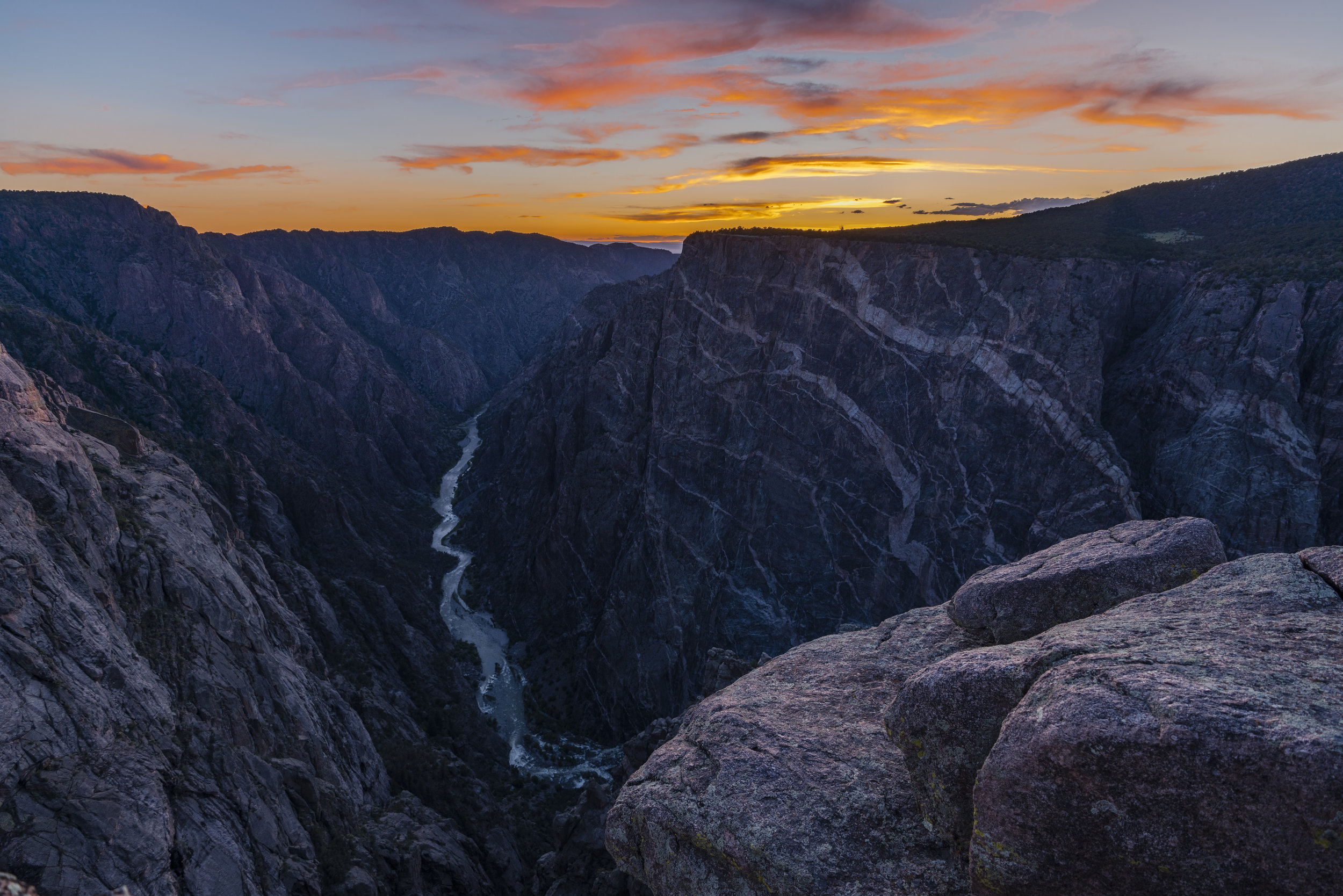
This is a sunset gift that keeps on giving and giving, and giving… I just have to remember, with gratitude what brought me here.
